The second (microorganism) part of
"aPrayer: memorial service for microorganisms
and artificial cells and lives"
metaPhorest aPrayer Team (Hideo Iwasaki, Hanna Saito, Shiryu Kirie, Mio Iizawa, Noriko Toda)
2016- present

A jar containing fermentation-related items

Monuments for microorganisms (right) and artificial cells/lives (left)
Short Summary (part of microorganisms)
The aPrayer project is an attempt to reconsider the perspective from which we find life and the history of our view of life by drawing a subsidiary line of "commemoration of artificial cells and microorganisms. Since we have documented the part of artificial cells in detail on another page, "consolation of microorganisms" is mentioned here.
This project was initiated primarily to reconsider "lifeness" of artificial/synthesized cells/lives. For many people, however, artificial cells and life are not very close to them. On the other hand, microorganisms are not only in our surroundings, but are also the building blocks of our bodies (it is said that our bodies are made up of about 3.7 billion cells, but in fact there are ten times as many bacteria in our bodies, and they are the essential elements of our body). Microorganisms are organisms with which we are supposed to come into contact on a daily basis, but we are not usually aware of them. They are considered to be simple organisms, but we humans have not been able to produce even a single cell of microorganisms (this is what the field of artificial cells is attempting to challenge).
On the front of the monument for microorganisms, there are pictorial representations of koji (molds for rice), Bacillus subtilis (for natto), yeast, and cyanobacteria, as well as designs for natto (fermented soy beans), soy sauce bottles, tokkuri (traditional ceramic sake server), microorganisms cultured on agar plates, and a microscope.
The cenotaph for artificial cells is probably the first in the world, but there is actually a precedent for microbial cenotaphs in Japan. A relatively famous example is the "fungus mound" at the Manshuin temple in Kyoto. This was founded in 1981 by the president of an enzyme industry company. Before that, as far as we know, there were several memorial monuments for fungi erected, all by companies in the fermentation industry. We, too, have been involved in this aPrayer project with the great help of the people in the fermentation industry in the northern part of Ibaraki Prefecture where fermented food production is thriving.
However, we believe it is important to consider not only the microorganisms that have helped people, but also the microorganisms that have pioneered life far before human beings appeared, and the microorganisms that still make up the majority of the earth's ecosystems and live in various environments unnoticed. Therefore, we have written the following inscription on the backside of the monument:
“We express our deepest gratitude and awe for the microorganisms that bring such fruitfulness to people's lives. We also remember the countless microorganisms that have spun life into existence unseen, and we hereby respectfully found a mound of microorganisms. September, 2016”
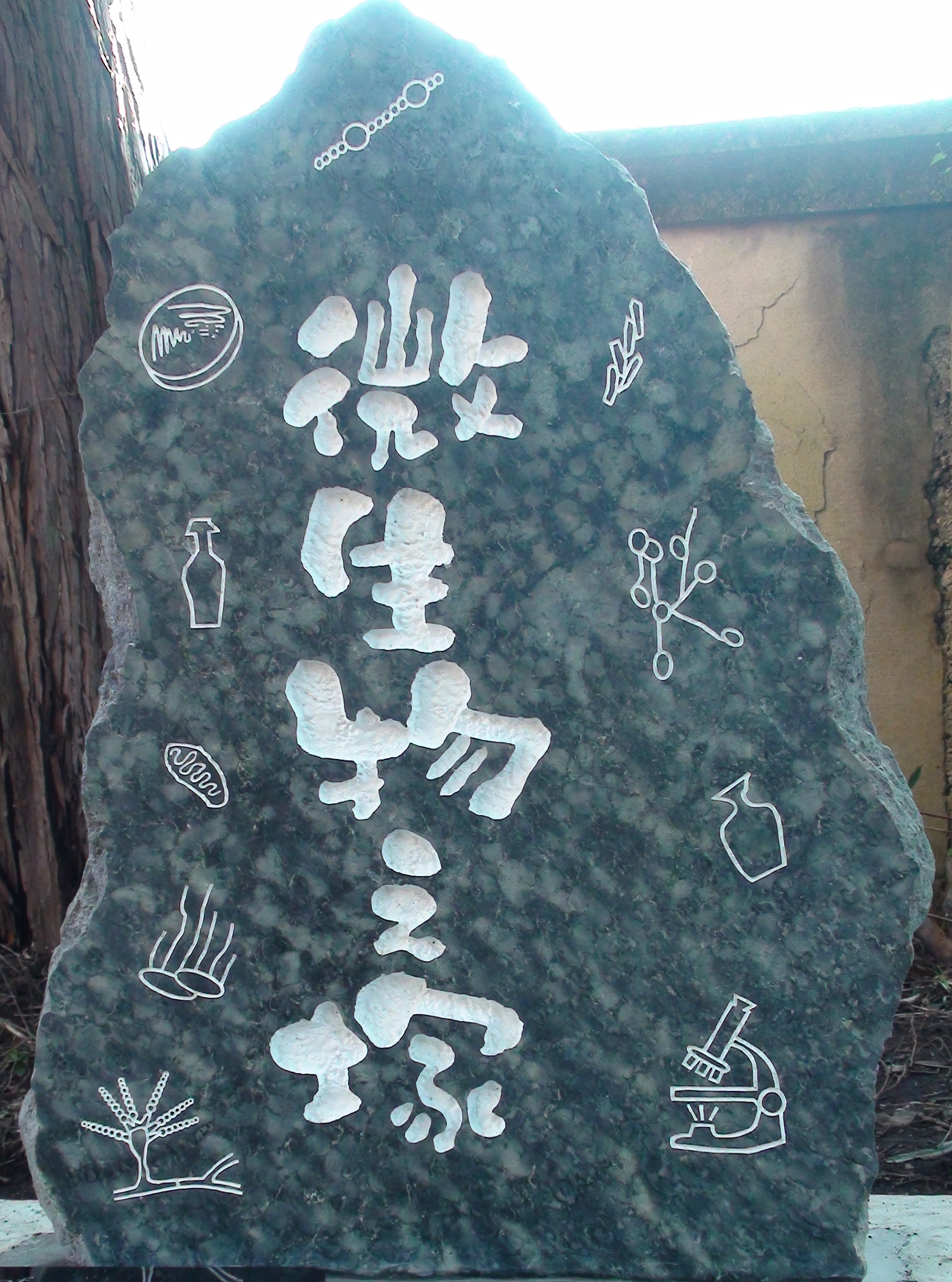
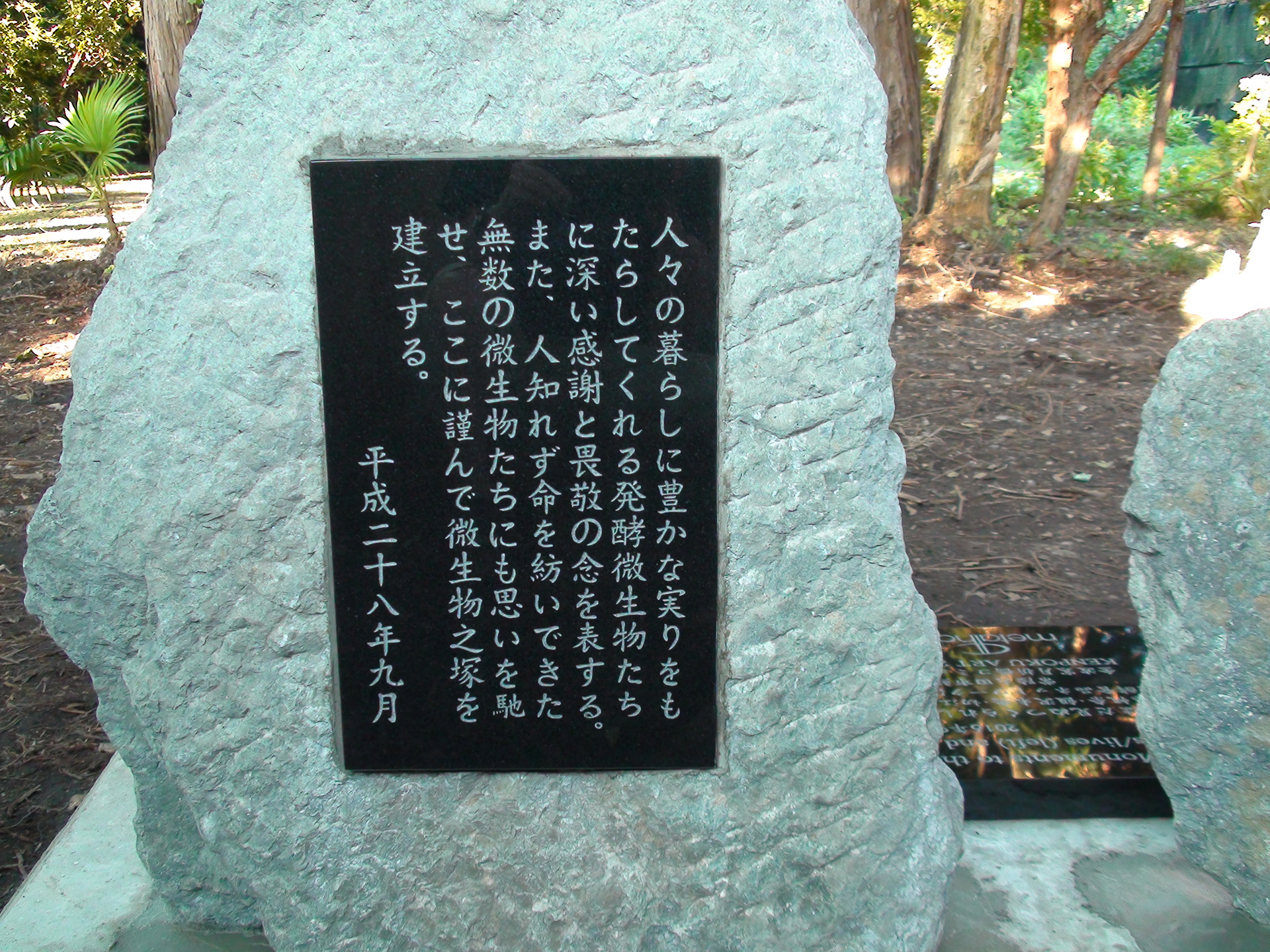
At the 2016 Ibaraki Prefectural North Art Festival, two altars were set up in the memorial space. The altar of artificial cells and the altar of microorganisms, corresponding to the two stone monuments (the monument of artificial cells and the monument of microorganisms). A glass jar was placed on top of each altar. The microorganism altar contains fermented foods and their ingredients donated by nine people engaged in the local fermentation industry. During the course of preparation, we interviewed the nine people how they are engaged in fermentation and microbes, how they perceive microorganisms, how they think of synthetic biology or artificial cell project, and how they think of possible commemoration of microorganisms. A documentary film shown at the festival contained some extraction of the interview videos.
The list of the content of the jar is as follows.
Natto bacillus: There are two to three types of Natto bacillus used in the production of natto (fermented soy) in Japan. This one is from Miyagi Prefecture and is said to produce a nostalgic taste. It is not easy to keep the quality of the product, demanding every-day works because the quality of the product varies depending on the slightest difference in daily conditions. (Courtesy: Kanasago Foods)
Rice and Koji (fungi grown on rice as a starter): When making sake, the rice is steamed and mixed with the fungus, Aspergillus to form Koji, which is used to saccharify the starch. The yeast converts the rice sugar into alcohol. The rice used for sake is specially made for this purpose and must be thoroughly polished off before steaming. If you try to scrape it off quickly, the rice gets hot and crumbles, so you have to do it slowly and carefully, which can take several days. (Courtesy: Gouretsu Brewery)
Sake-kasu (sake lees): A white, viscous liquid made from a mixture of yeast, koji and steamed rice is called "moromi," in which sugar and alcohol are produced through fermentation. The solid left over after the pressing of the sake moromi is called Sake-kasu, and it is used for food such as amazake (sweet sake) and kasuzuke (pickles). The pressed liquid is heated for long-term storage and the microorganisms in it are sterilized. (Courtesy: Okabe Brewery)
Wrapping straw for making natto and dried natto: Natto bacillus is an extremely vigorous organism that cannot be killed by vacuum, starvation or boiling water. In the traditional natto making process, the bacillus natto is used to kill other microorganisms attached to the straw by boiling, so that only the bacillus natto can be grown on the soybeans. In addition, if freeze-dried without heating, the bacillus natto is not killed in the dried natto. (Courtesy: Toko Foods)
Soy sauce lees (Shoyu kasu, soy sauce cake): The power of microorganisms such as koji, yeast and lactobacillus are essential for making soy sauce as well as soybeans and wheat, which are the main ingredients. These microorganisms bring out the flavor and aroma of soy sauce by decomposing and fermenting the ingredients. Soy sauce cake contains fibers and other substances that could not be decomposed by the microorganisms, and these microorganisms are also attached to soy sauce cake. (Courtesy: Yonebishi Soysauce)
Bakery's yeast: Yeast Yeast from fruits and grains is often referred to as natural yeast bread when it is used to make bread. Here we have yeast cultured from apples, grapes and cranberries. Each yeast has its own personality, and the combination of these characteristics and the wheat will determine what kind of bread will be delicious. (Courtesy: Sunny Side Kitchen)
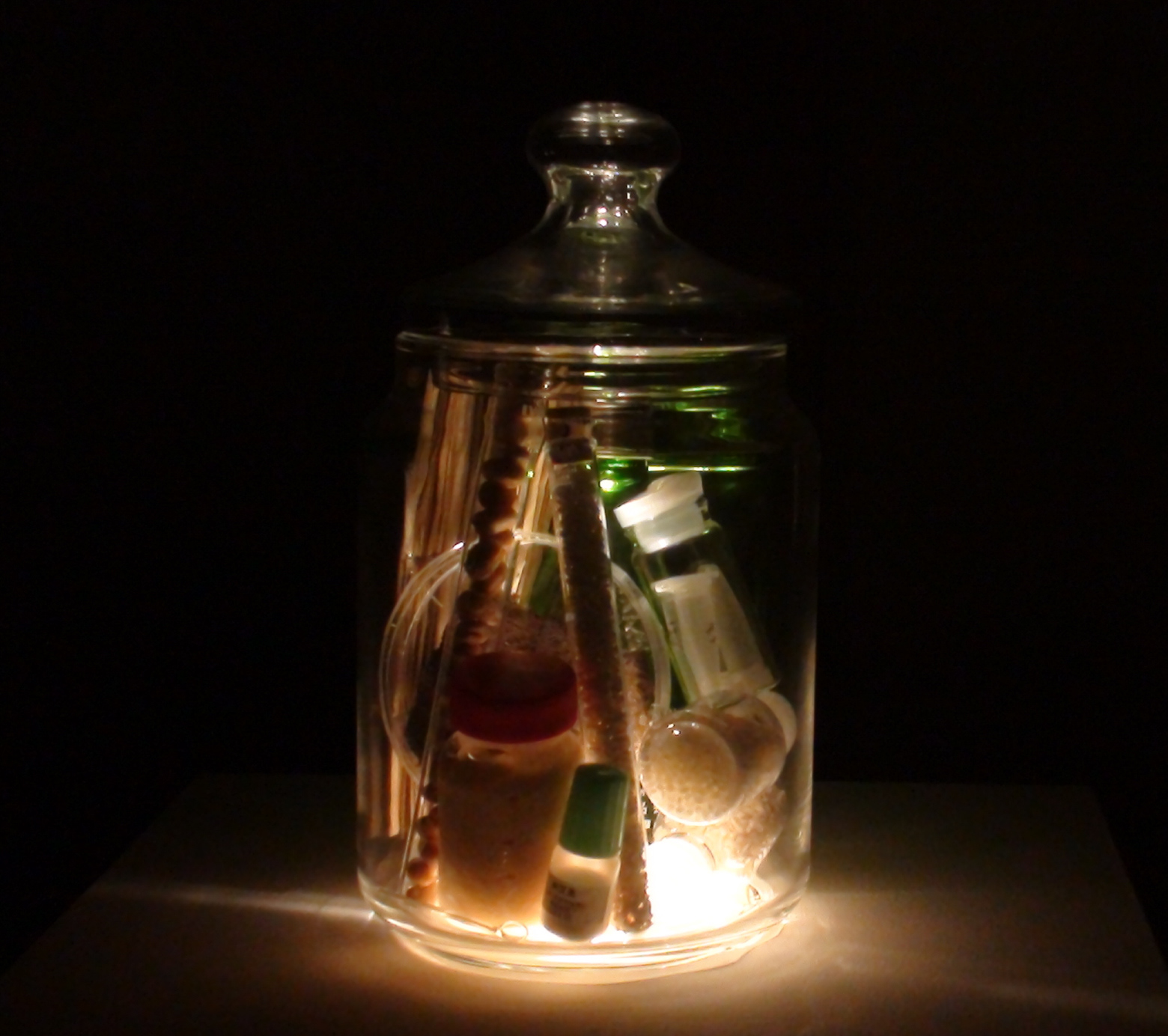
A jar compiling fermentation-related samples
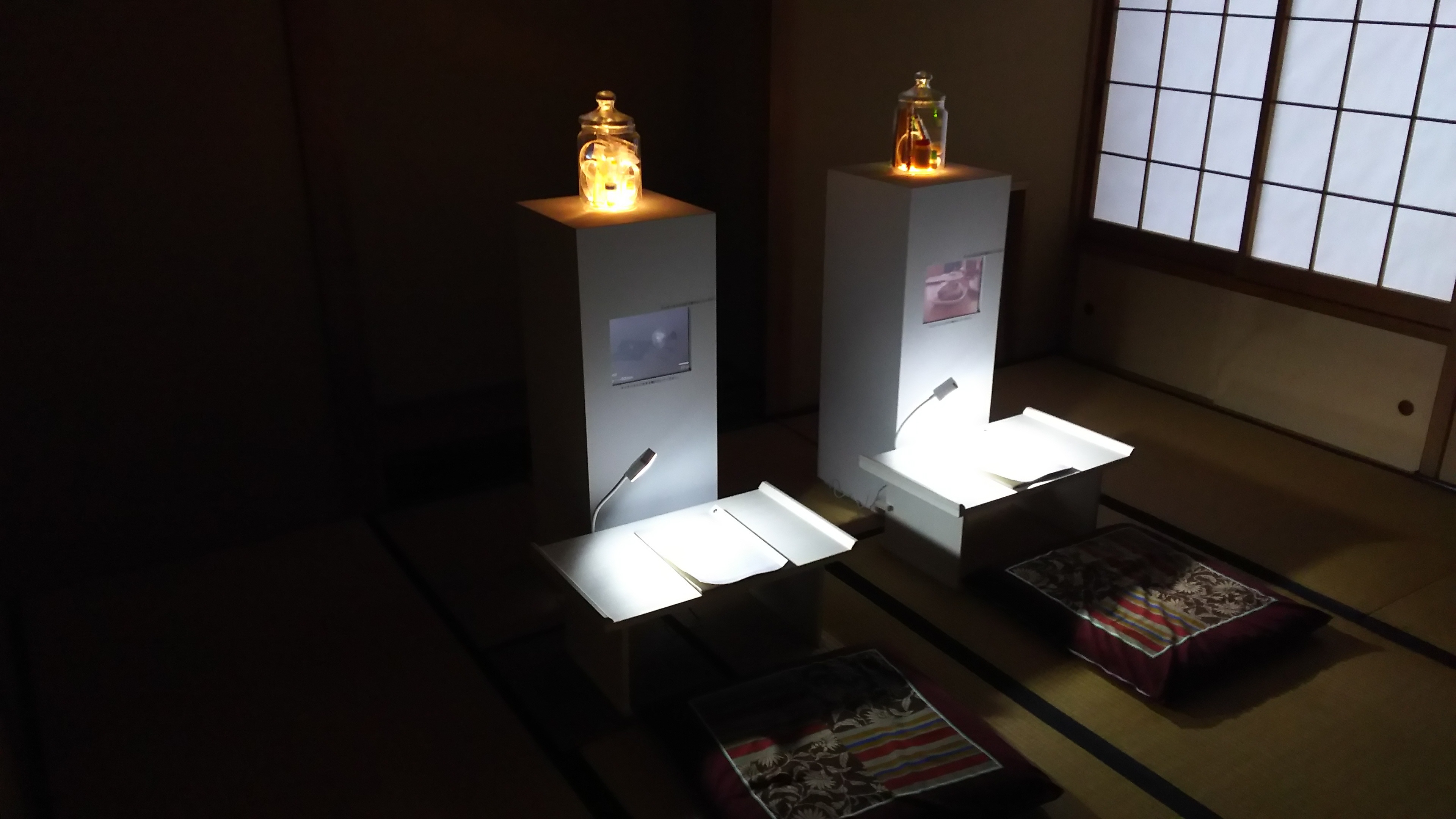
Two alters holding glass jars
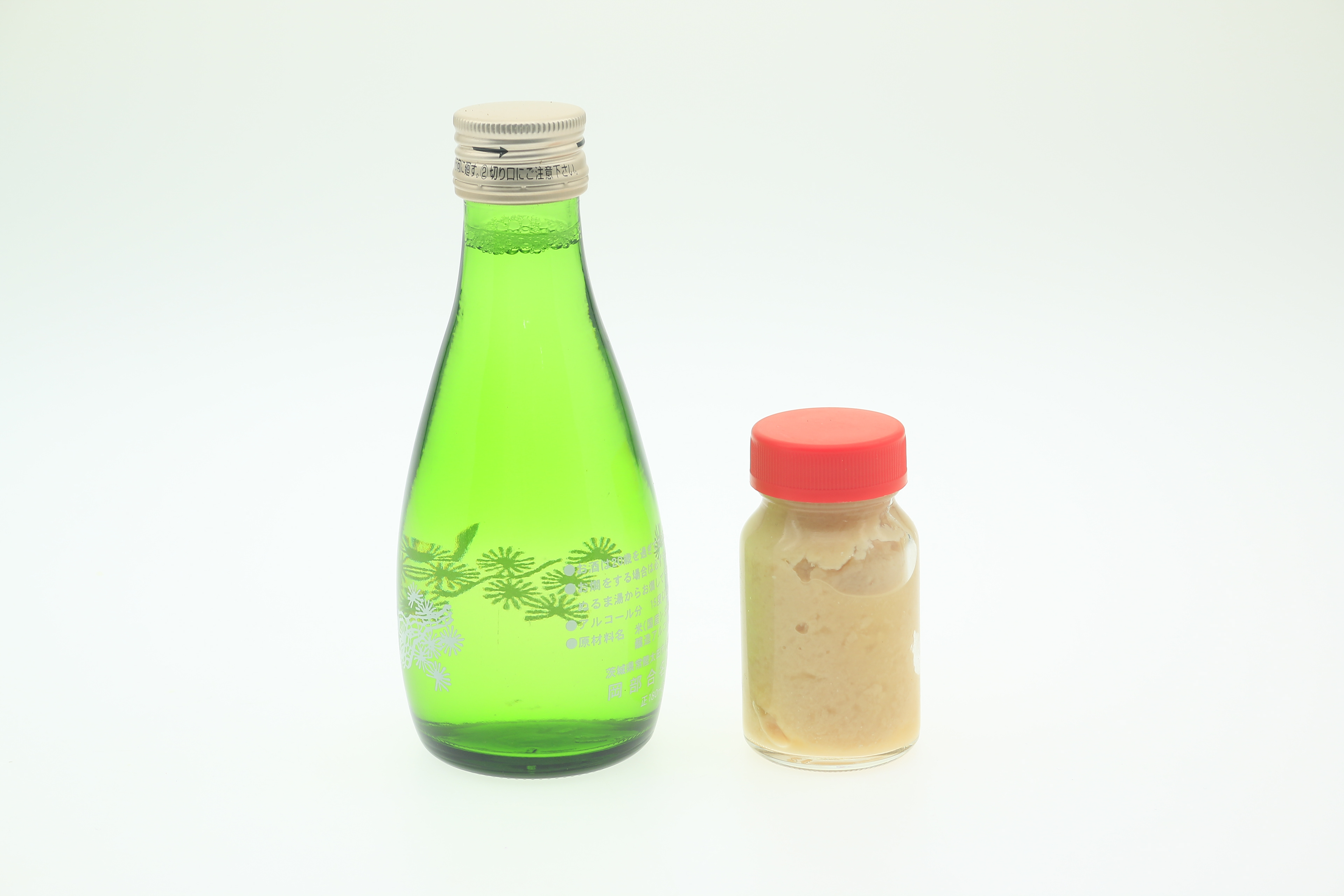
Sake and sake-lees
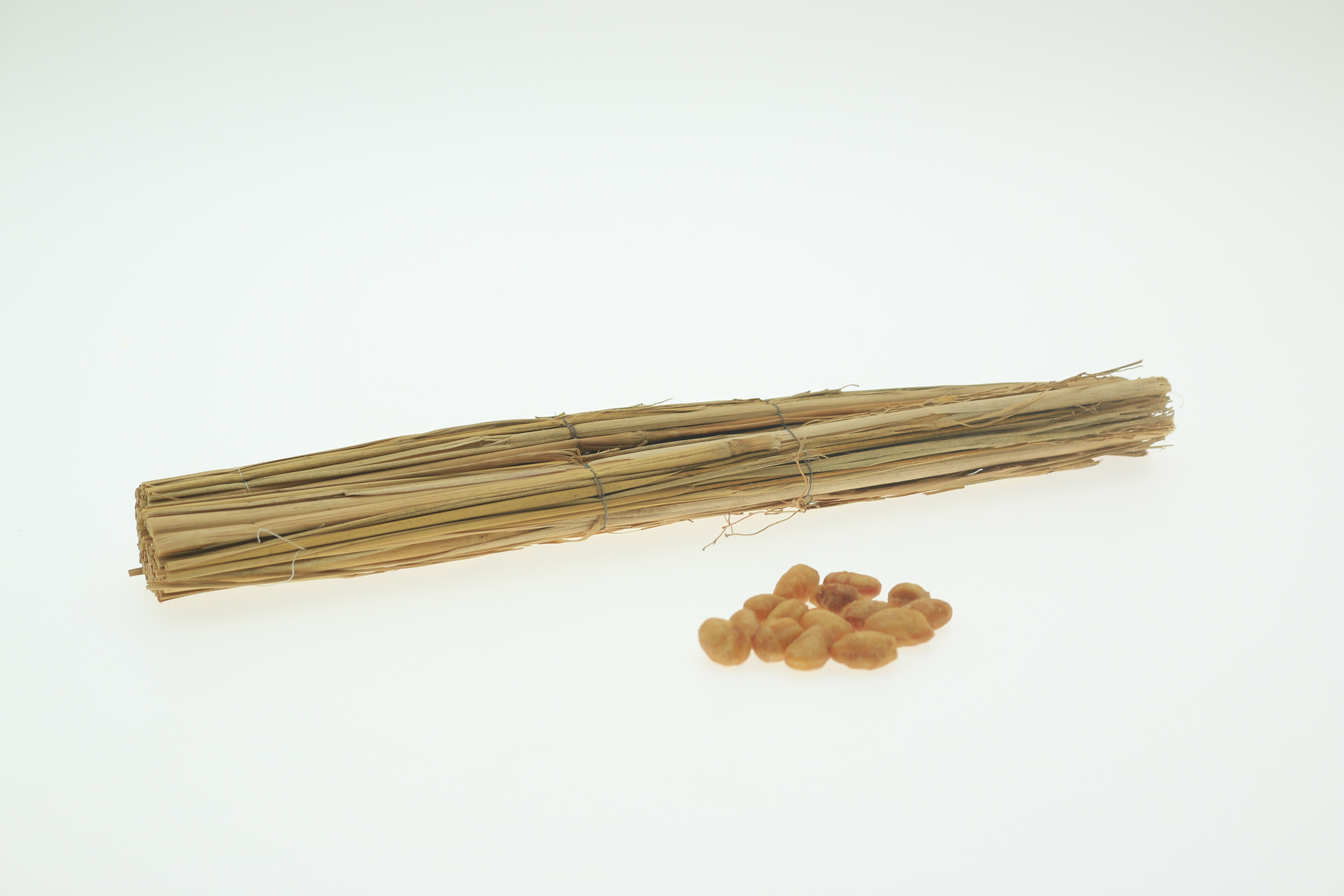
Natto and warazuto (straw wrapper)
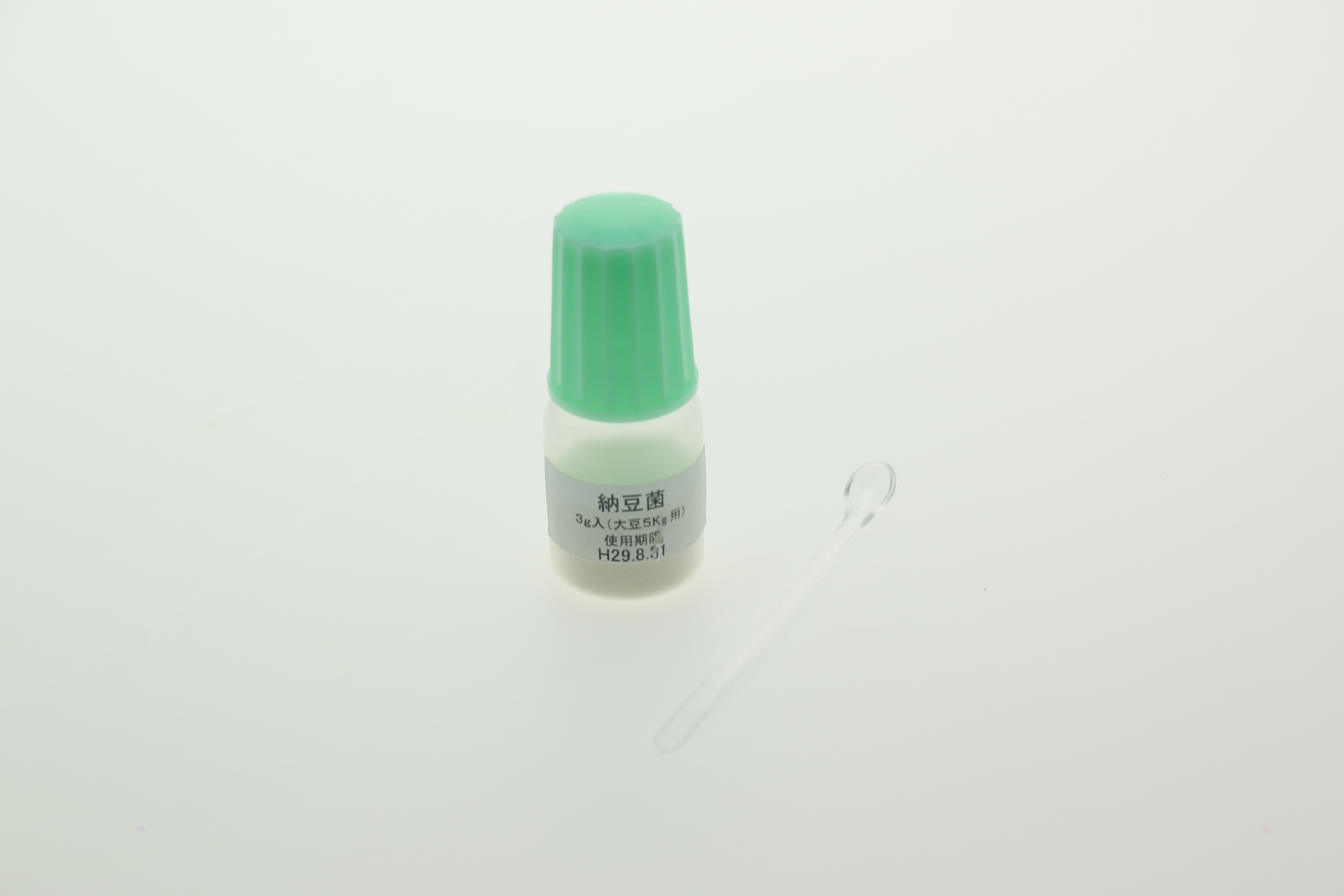
Bacteria (Bacillus natto) used for natto making
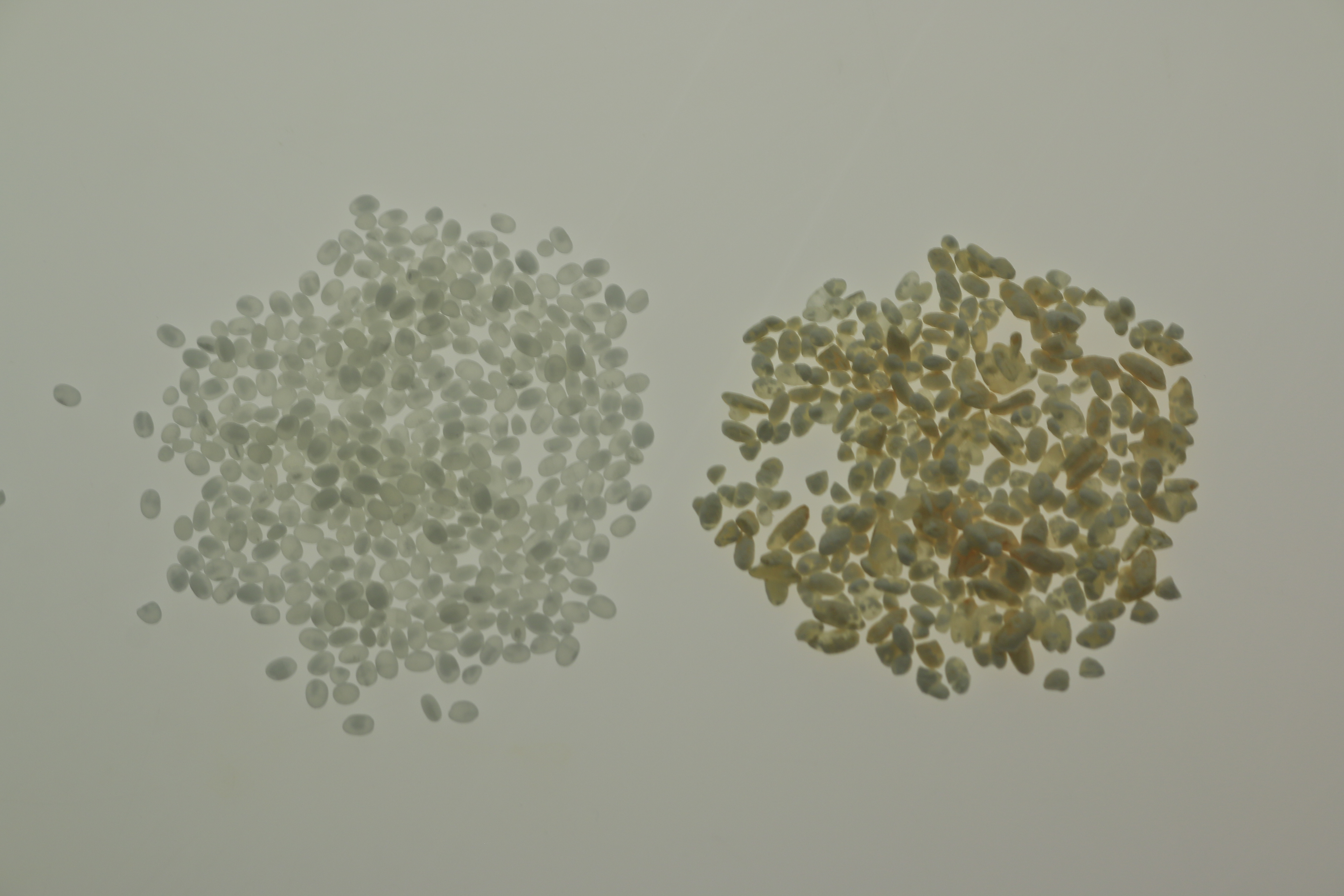
Rice and mold grown on rice

Traditional tool for sake making (stopper of barrel)
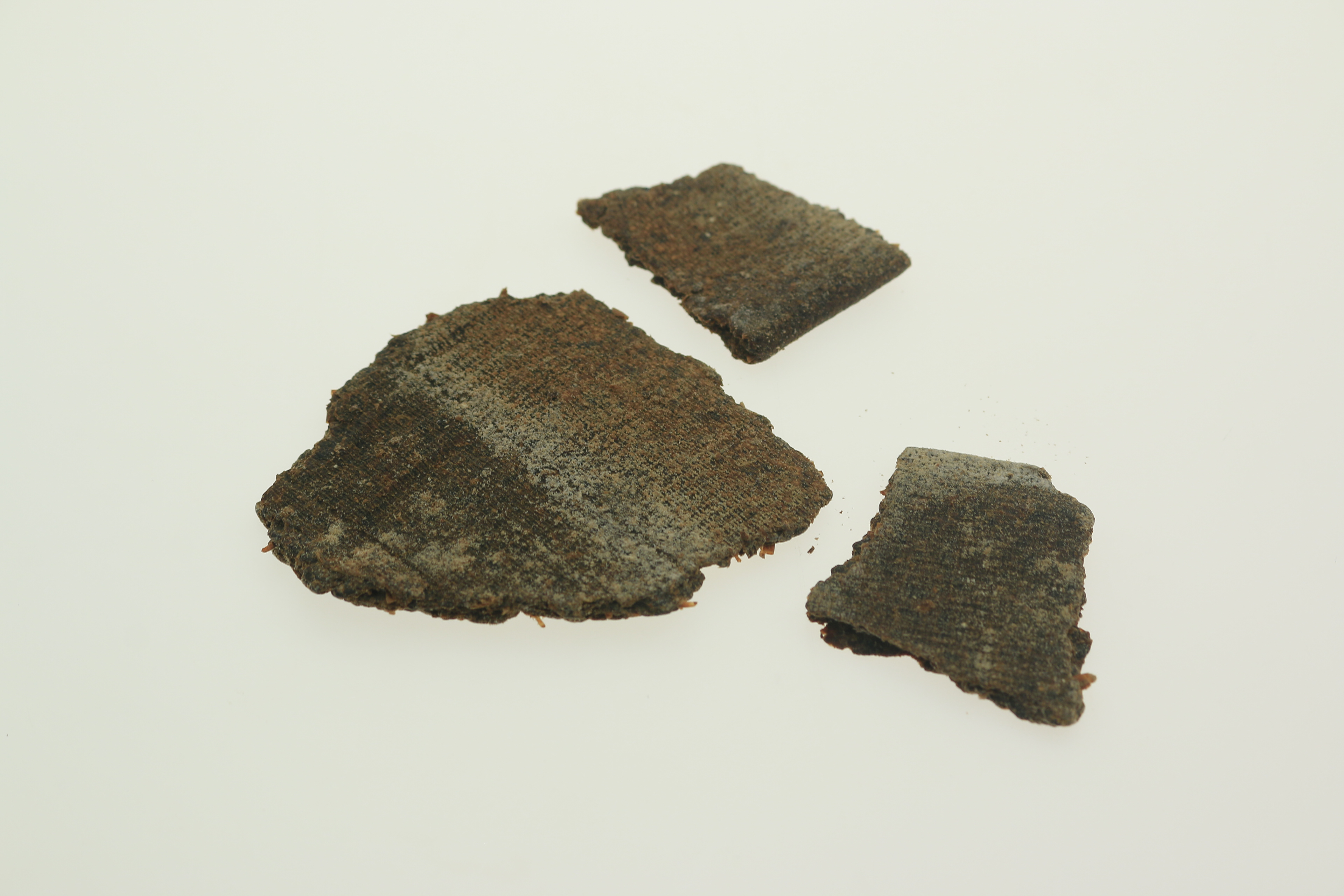
Soy sauce lees
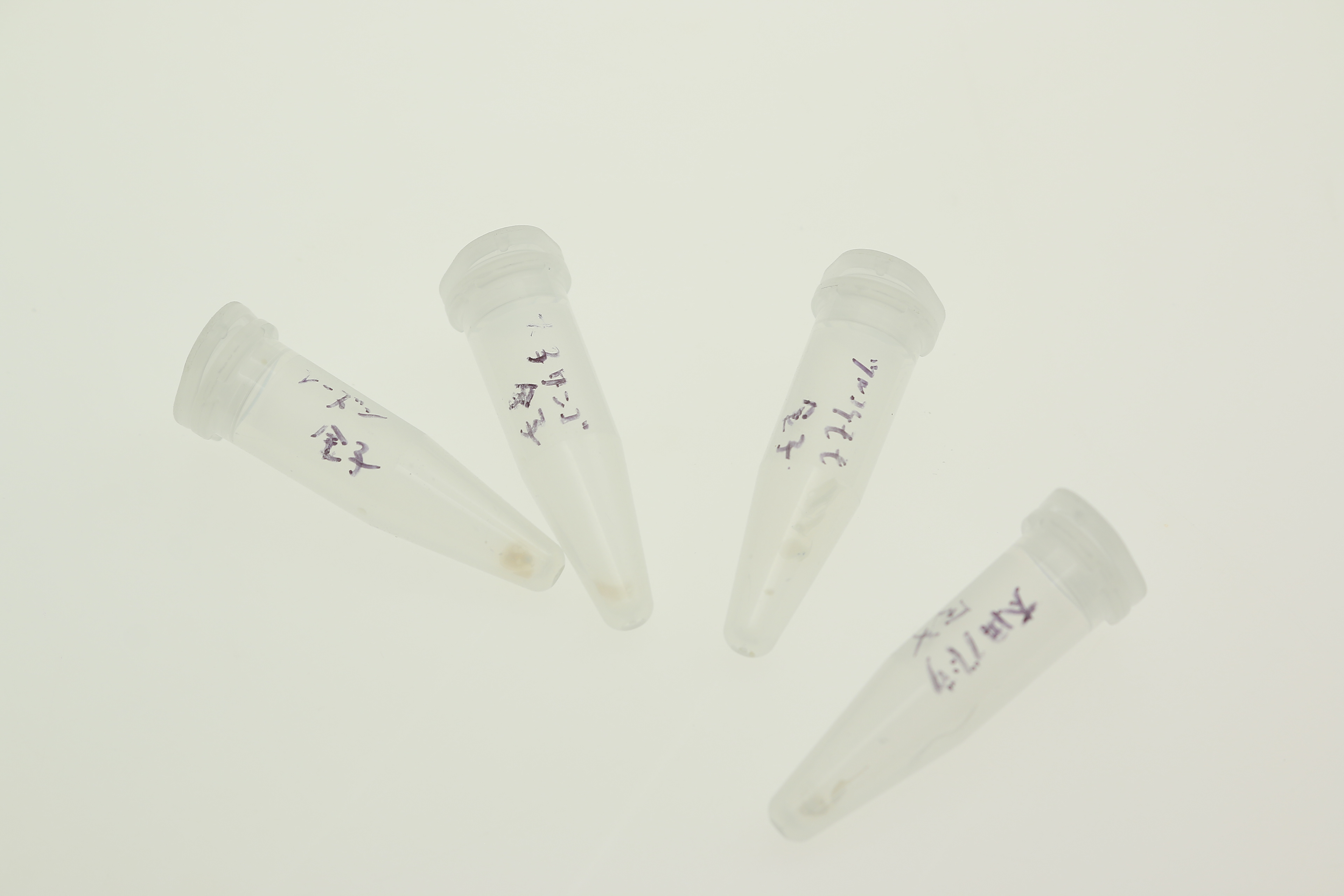
Yeast purified from naturally isolated bred yeasts

Yeasts purified from the wild for bred making
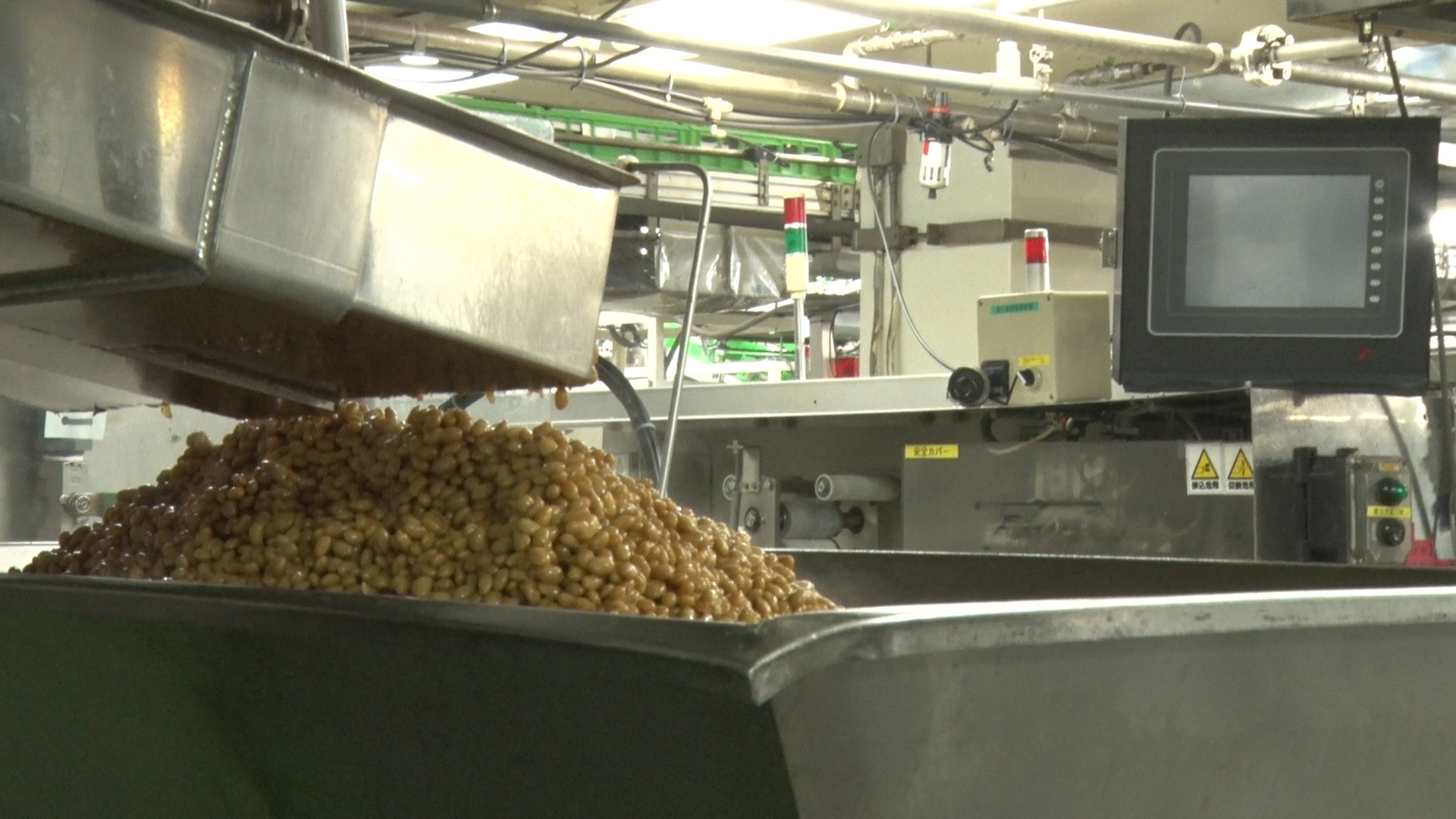
Natto factory (Kanasago Foods)
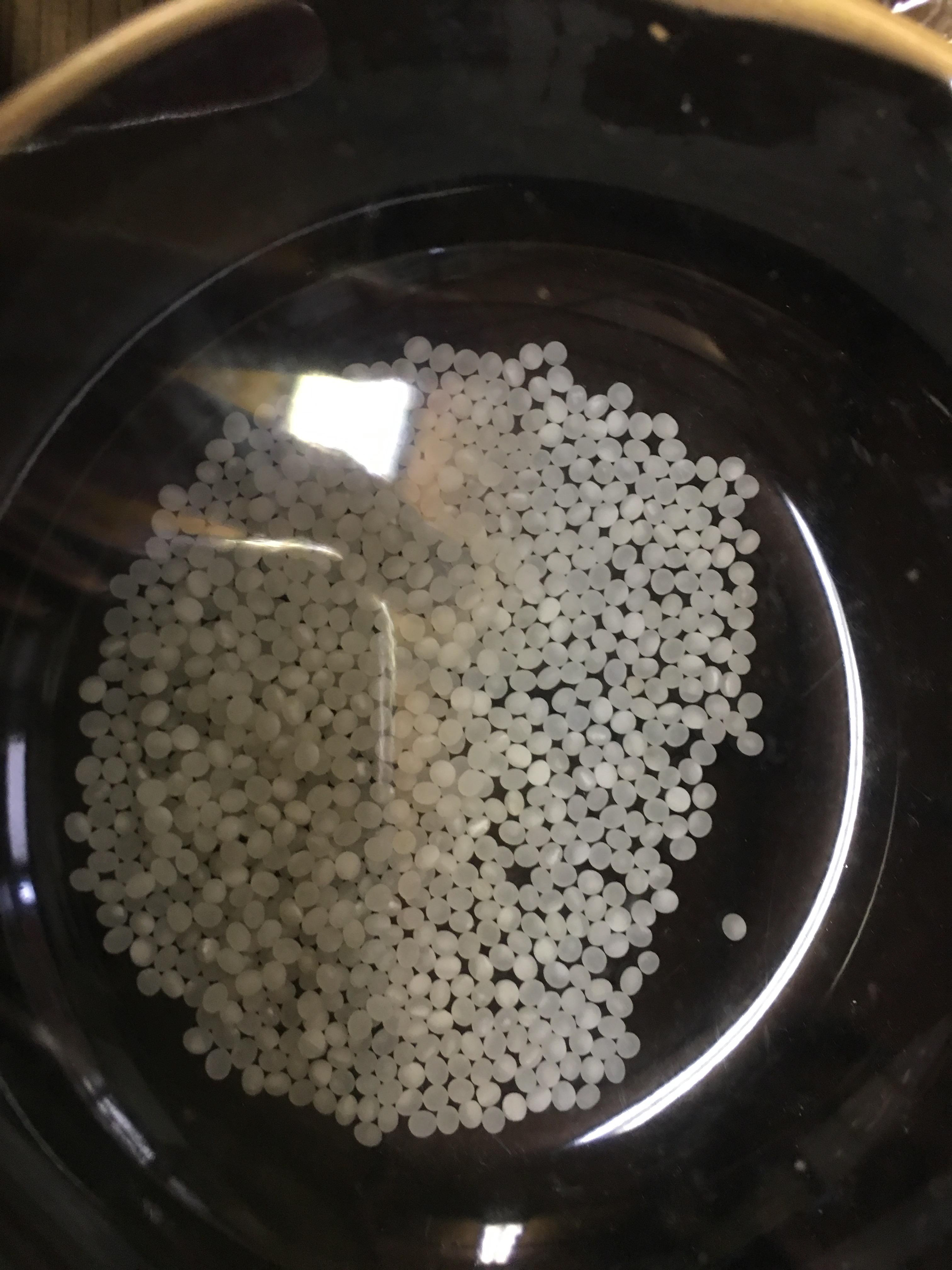
Rice for sake (Okabe brewing company)

Barrels for sake making (Rice for sake (Okabe brewing company)

Barrels for soy sauce (Yonebishi Shoyu)
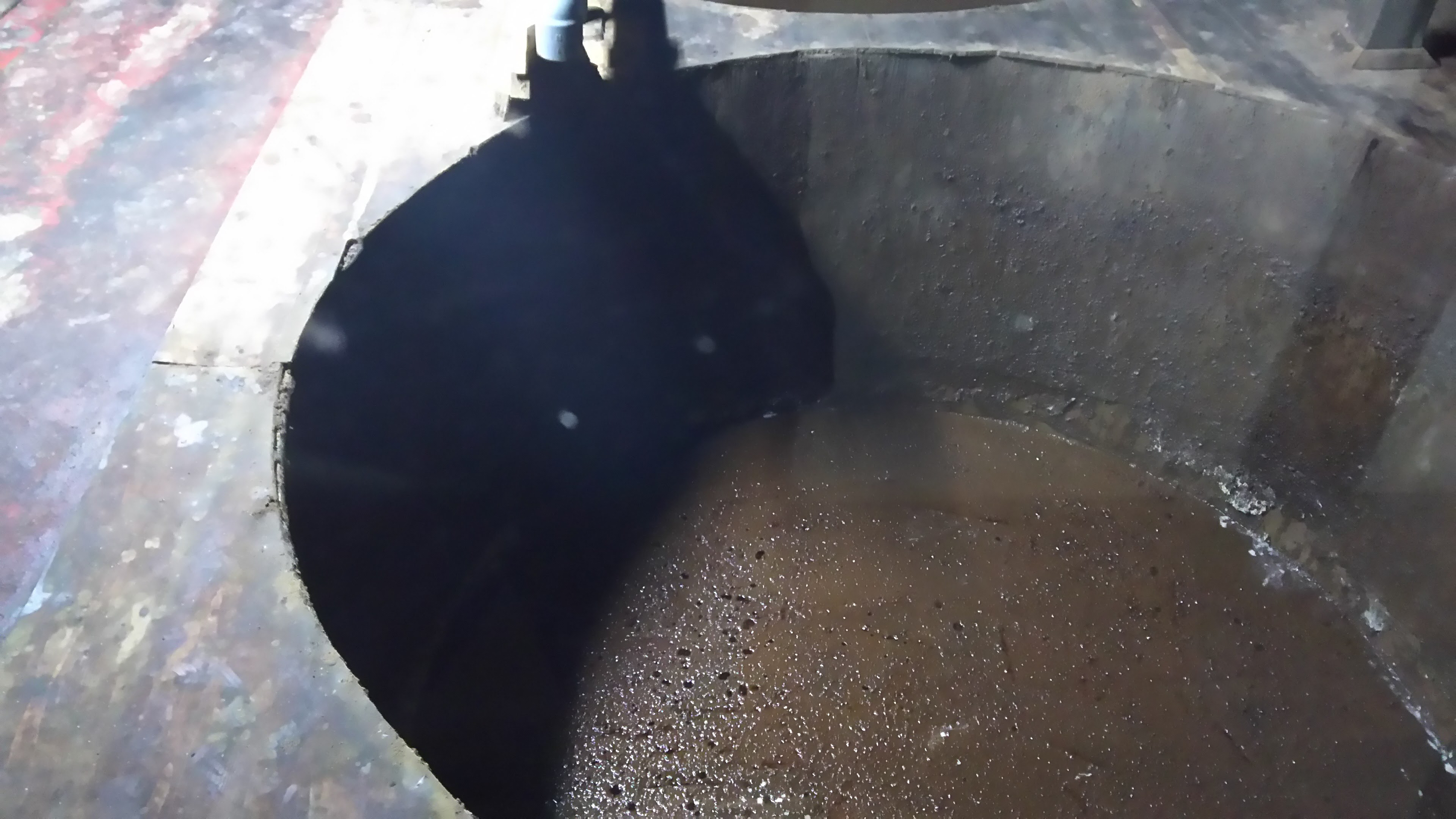
Barrels for soy sauce (Yonebishi Shoyu)
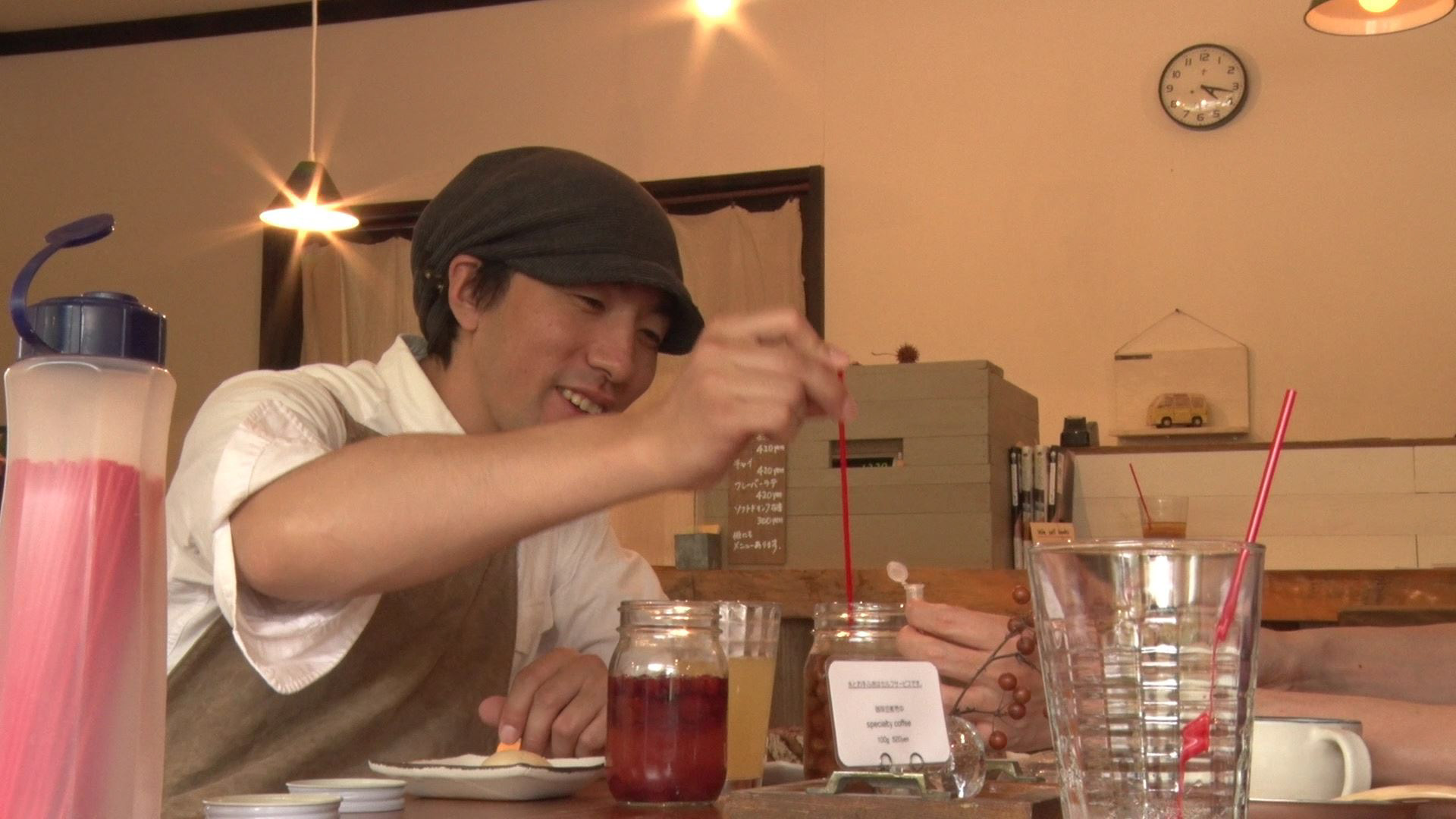
Mr. Koji Kaneko, a bakery chief, explaining yeast sampling from the wild
Annual memorial service for microorganisms and artificial cells/lives
Since the 2016 Arts Festival, local people and we have hosted annual memorial services for microorganisms and artificial cells/lives.The first was the unveiling of the 2016 stone monument, where members of metaPhorest, art festival officials, local fermenters, family members of locals and landowners from the Satomi area where the monuments were placed, synthetic biologists, and those who helped with the stone and stone carving, in the midst of heavy rains, with congratulations and a ceremony of enshrinement by the local shrine's shinto priest (after this first event, any religious priests have never performed the ritual to avoid any specific religious context).
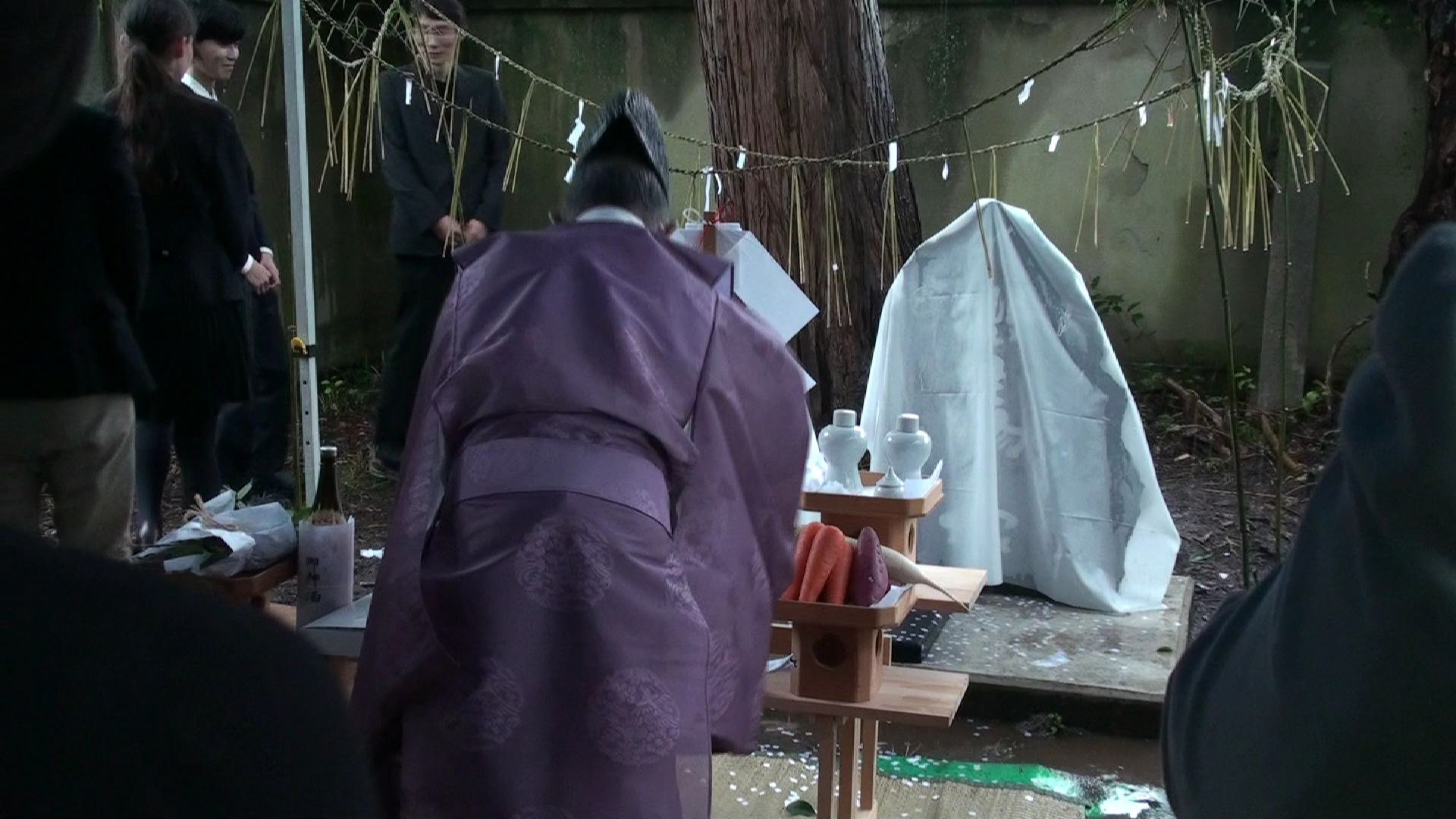
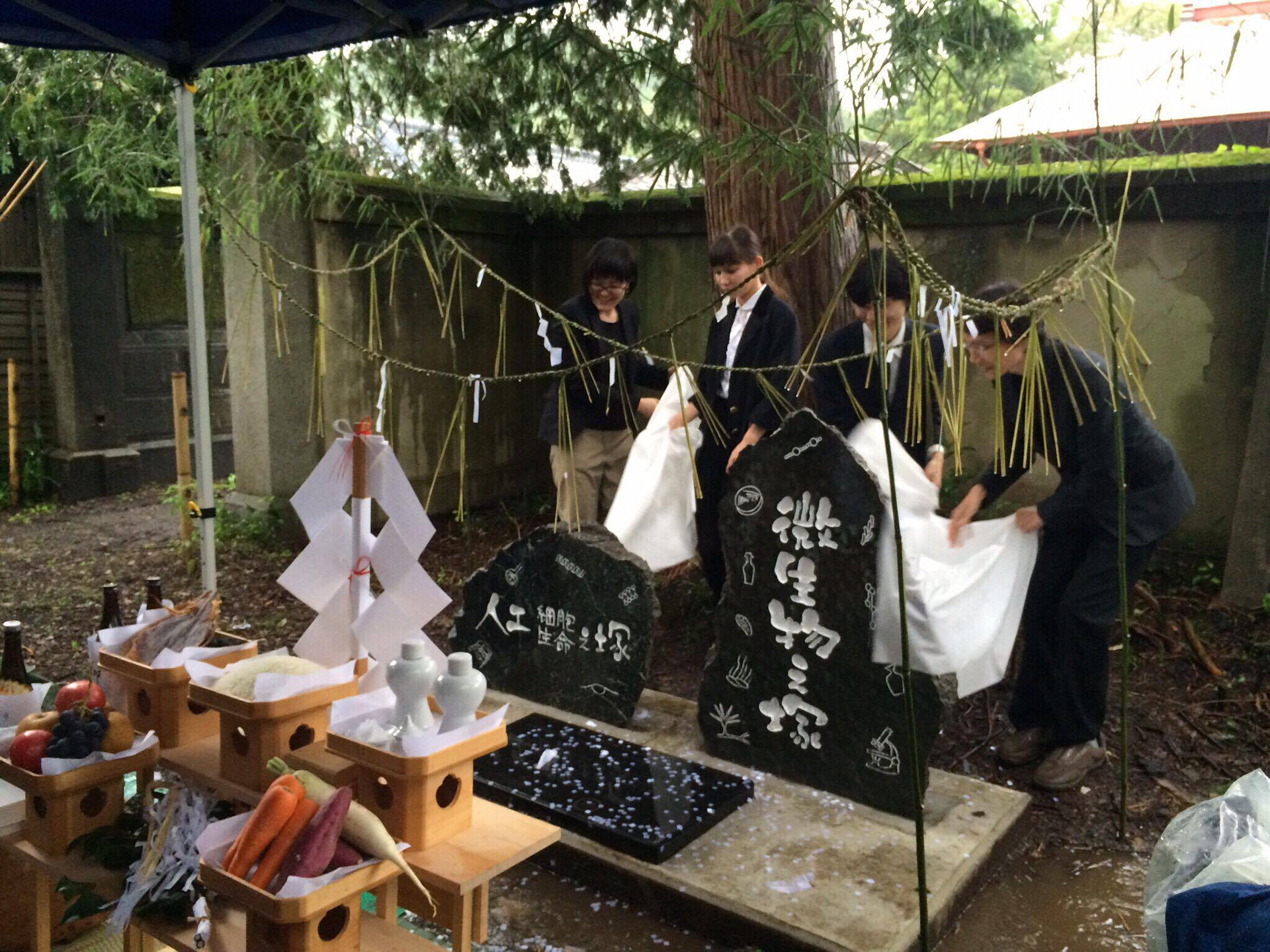


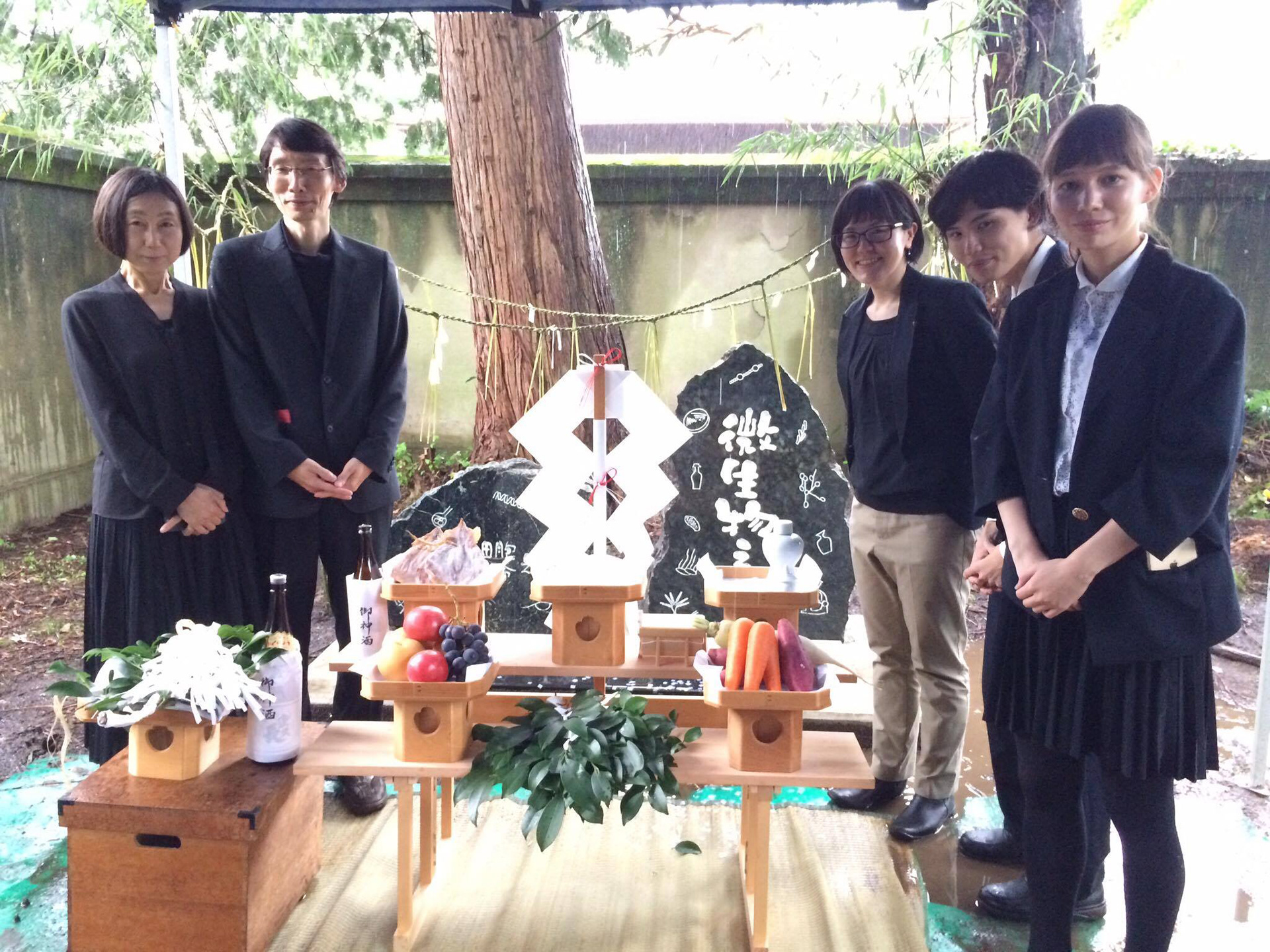
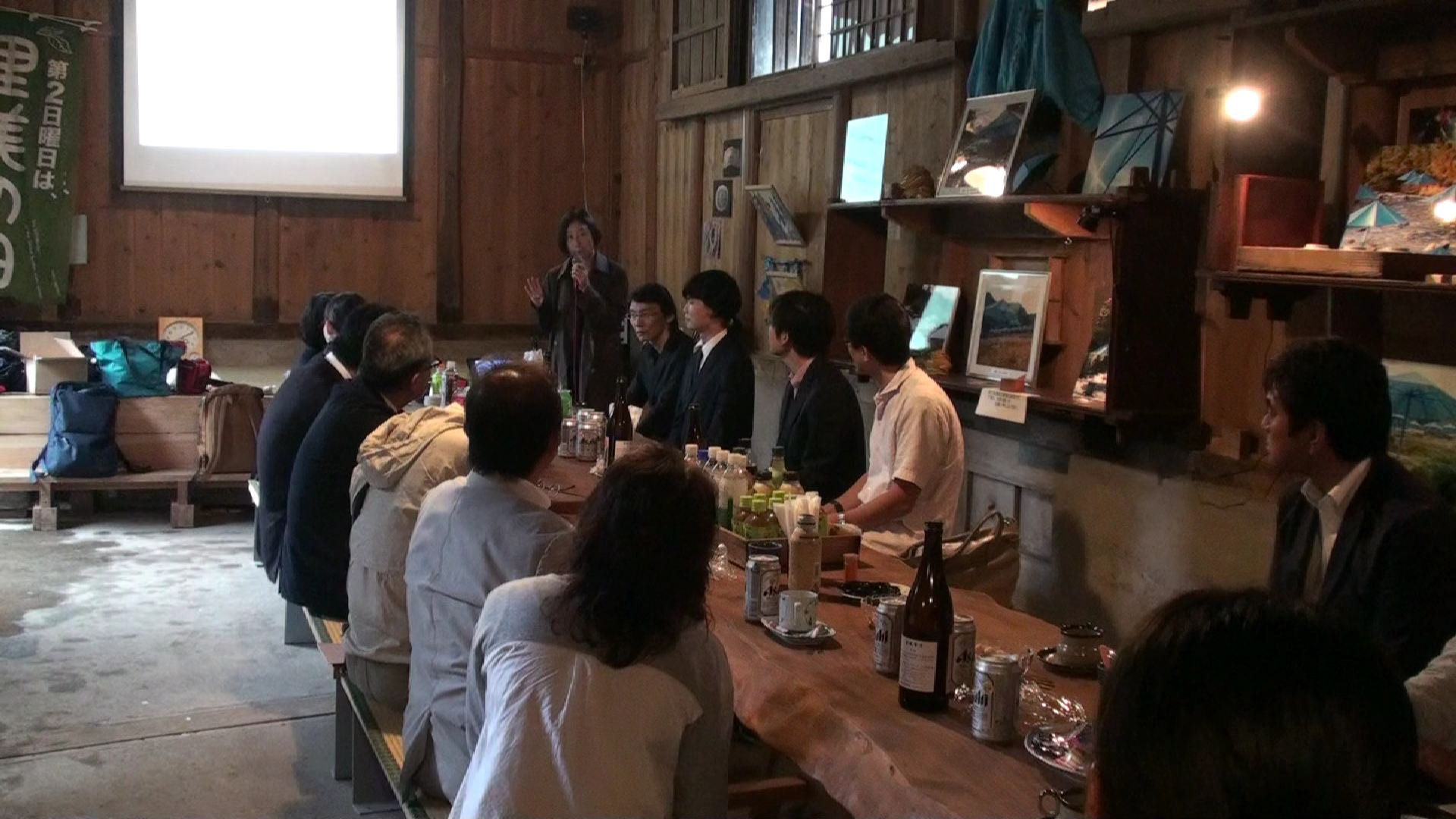
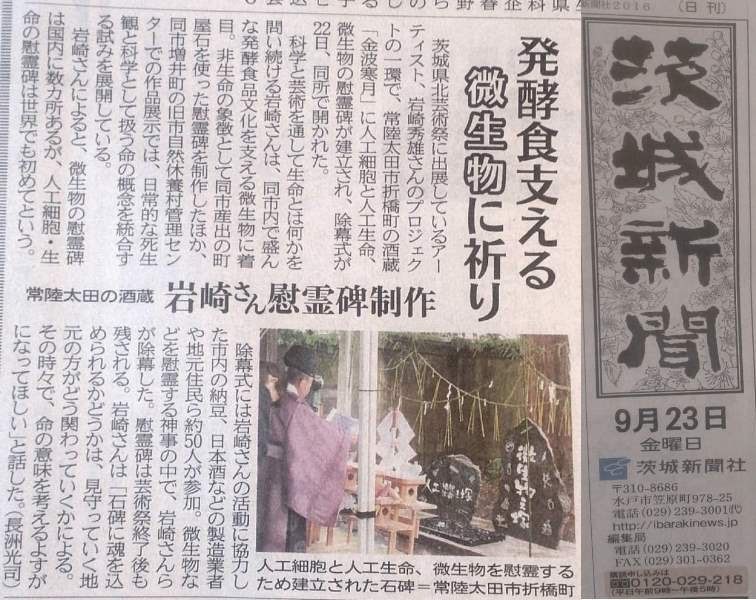

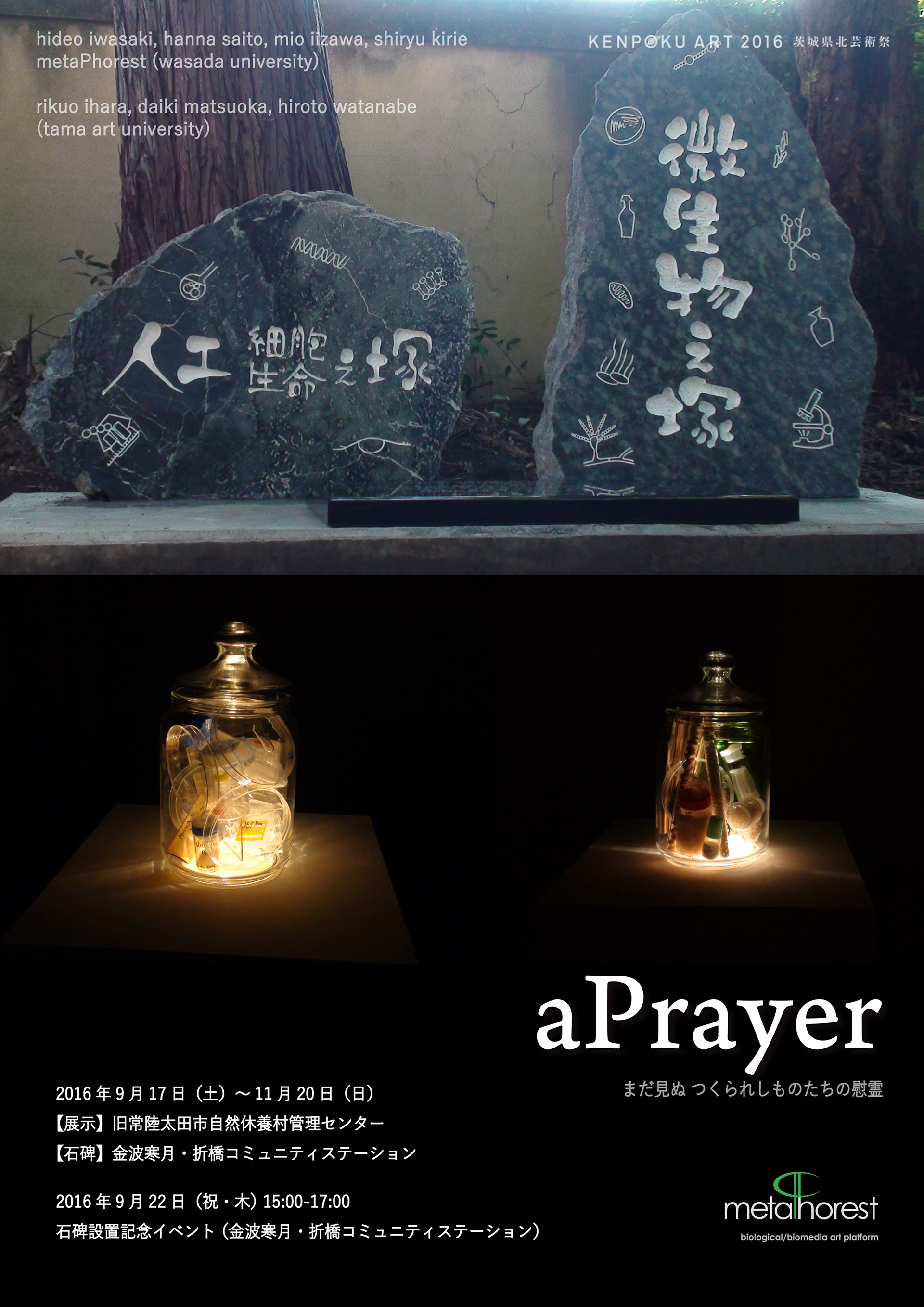

The second one took place the following year, in 2017, in a ceremony of enshrinement, not a burying ceremony, with two glass jars on the altar and all records (paper and electronic) related to this project so far strictly enclosed in the space in front of the stone monument. The mound was cleansed with alcohol made by an artificial cell. We also baked Natto pizza in the garden of the former sake brewery where the monument is located, and ate it together with others. Since then, local people and artificial cell researchers gather at the end of November, during the beautiful season of autumn leaves, and hold the ceremony in a harmonious atmosphere. There is no plan yet for what will happen in 2020 when the corona crisis strikes, but we hope to continue this event for a long time.
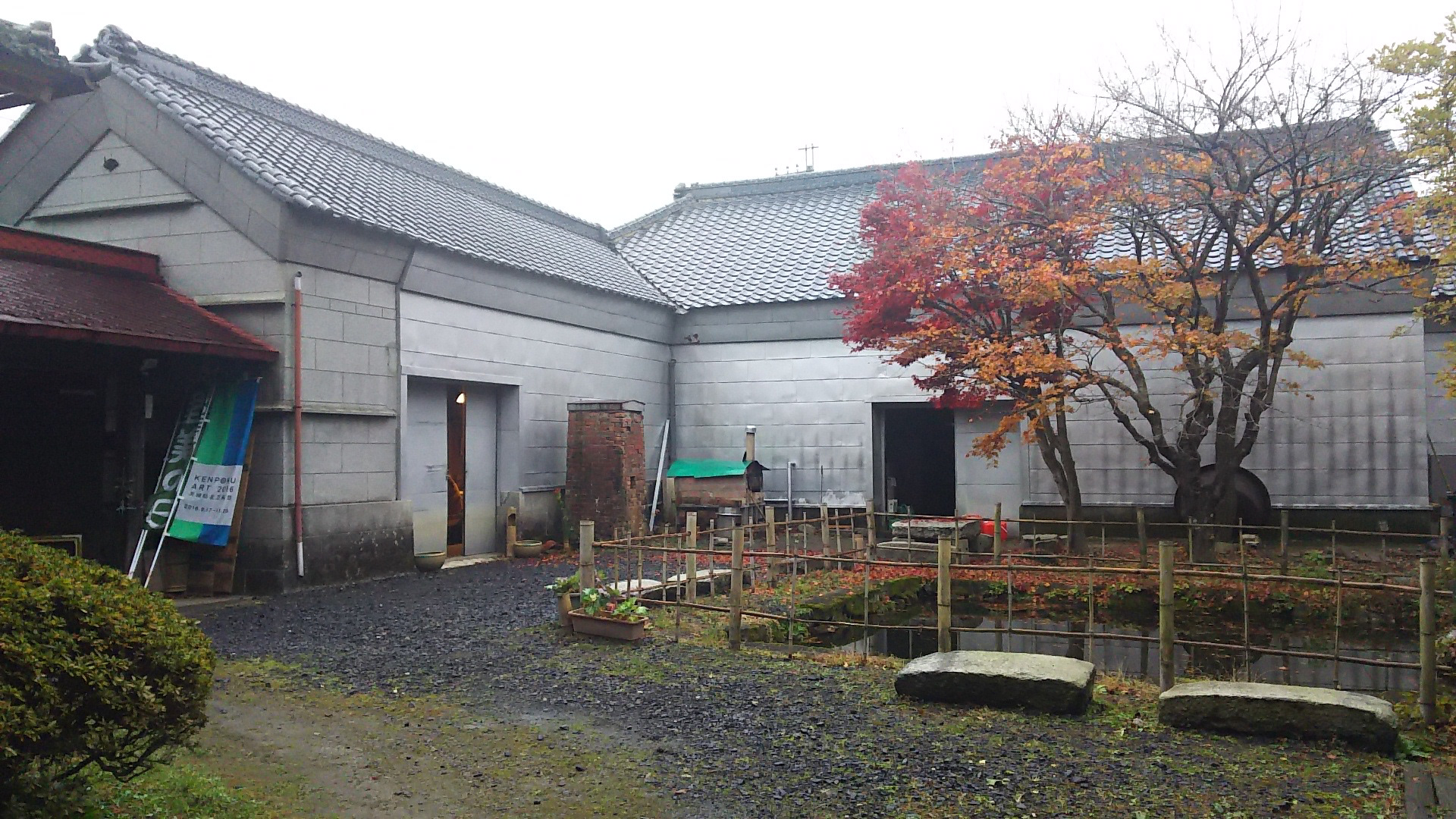
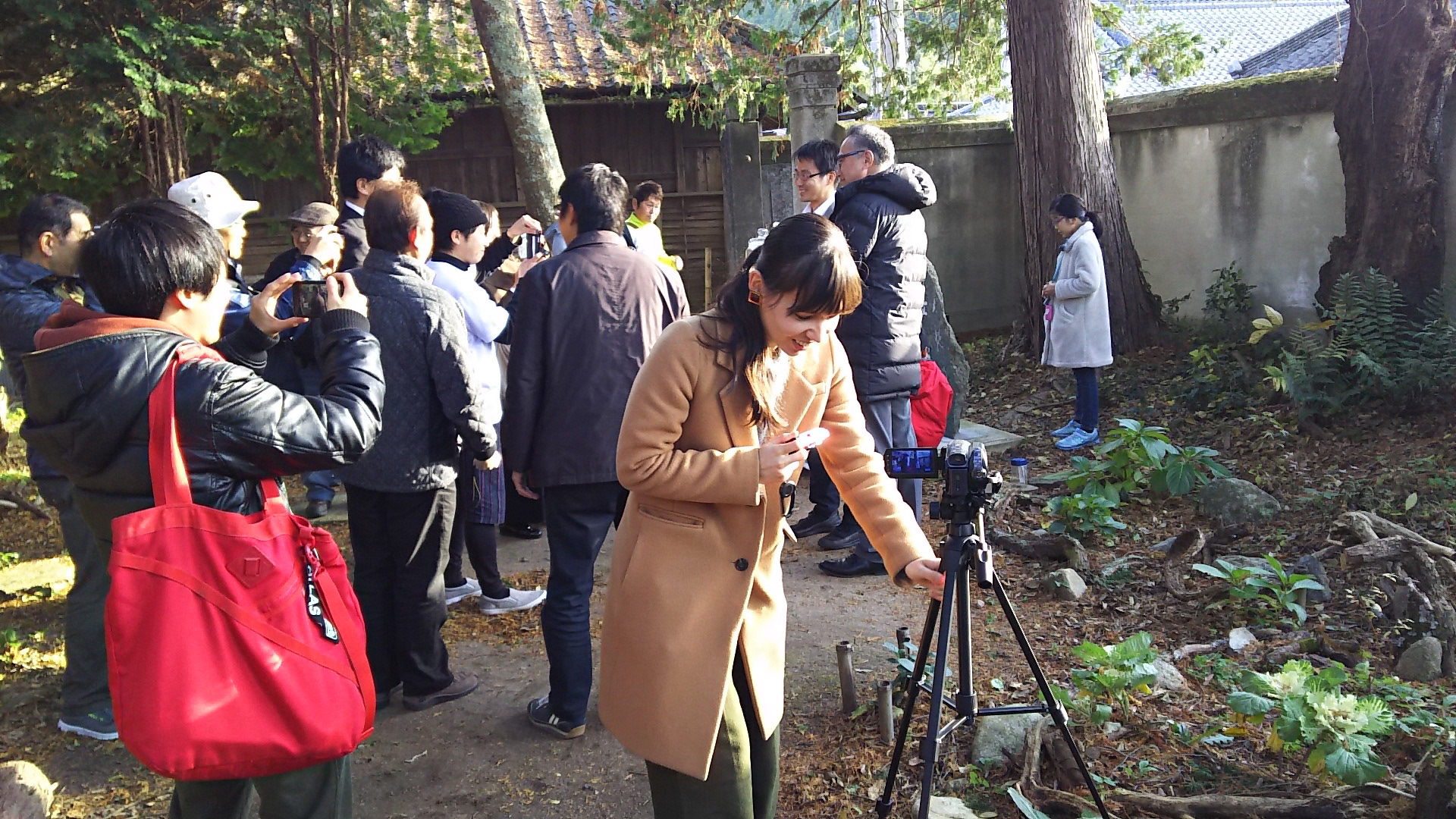
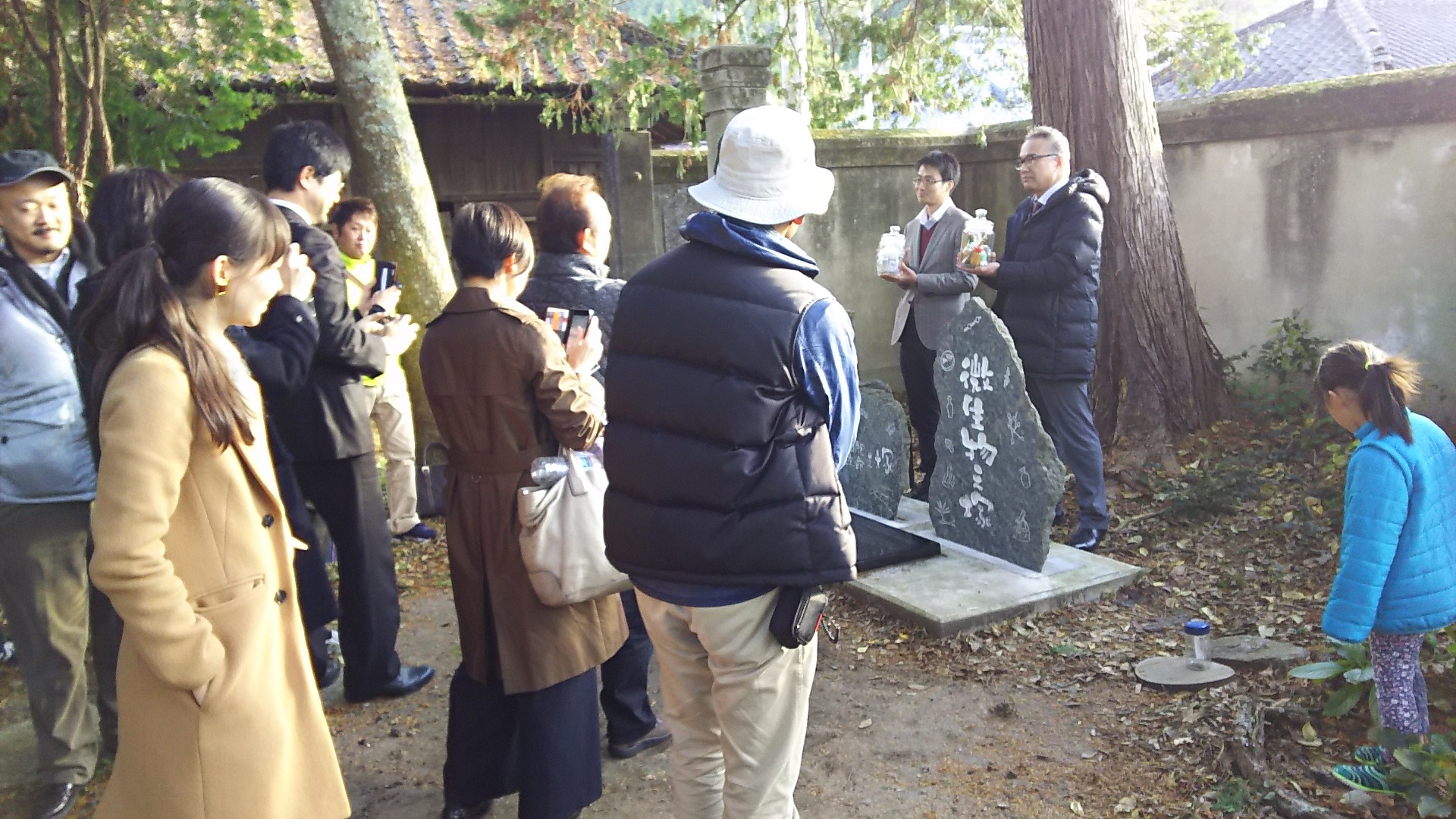

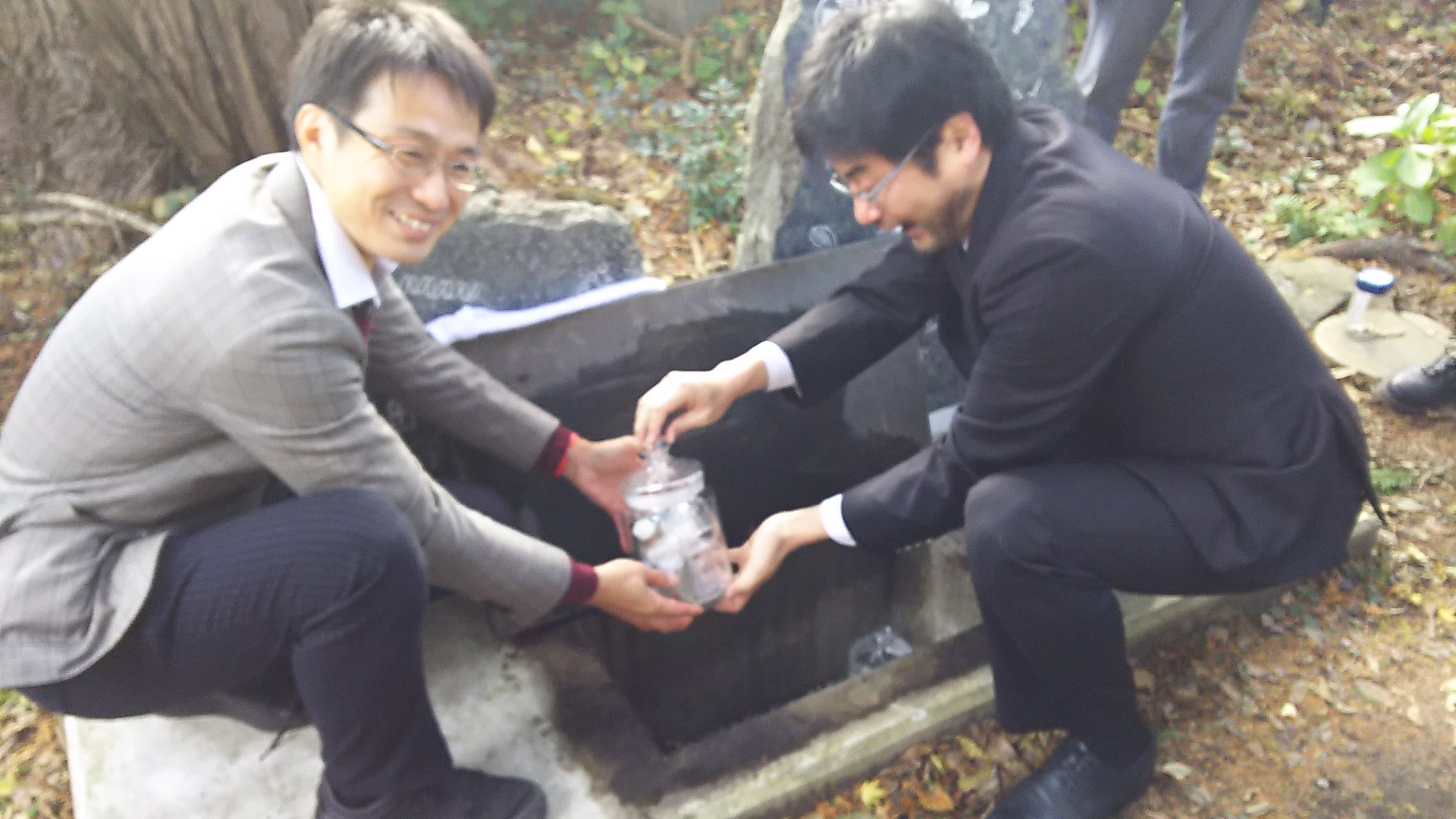


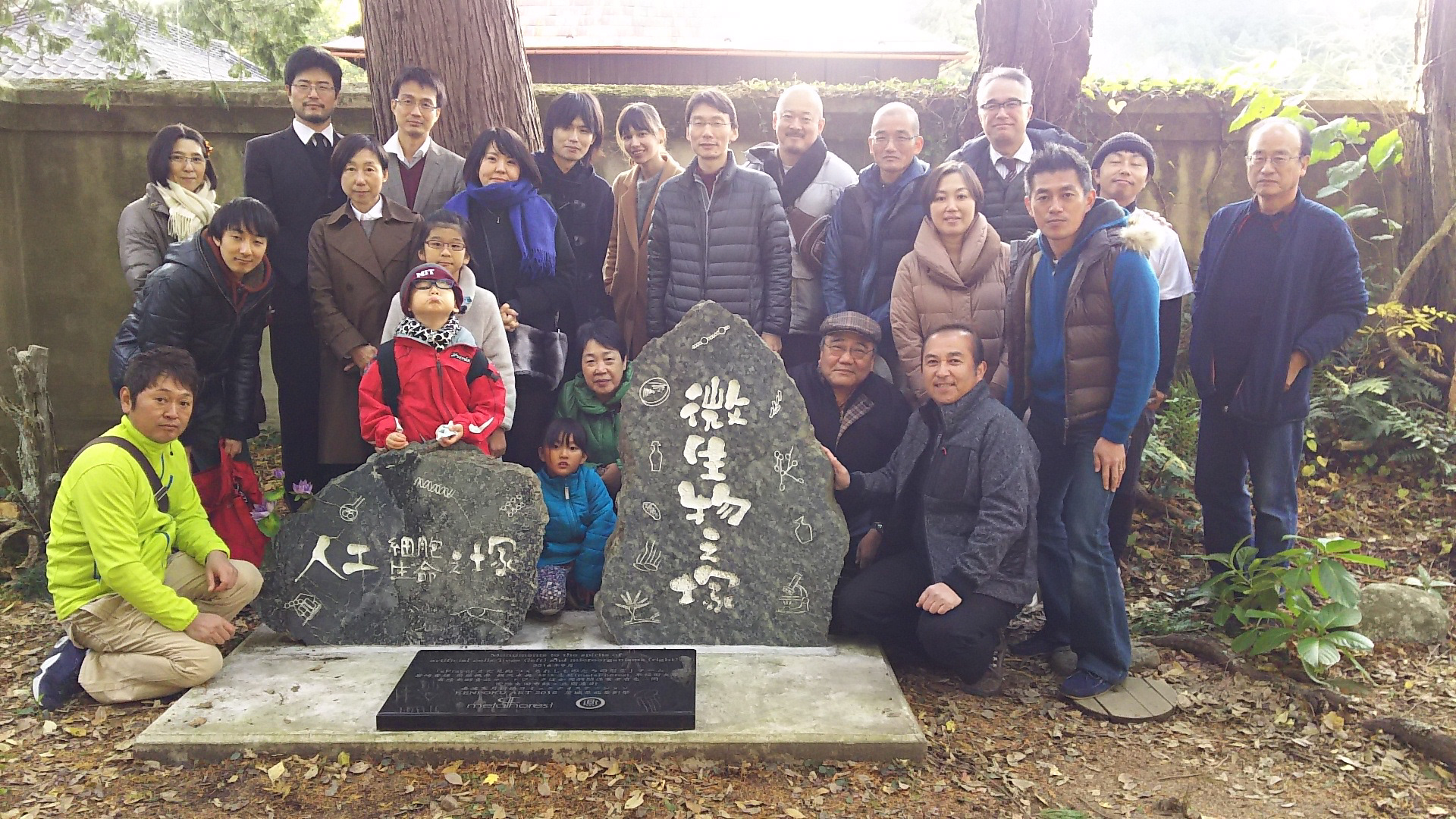

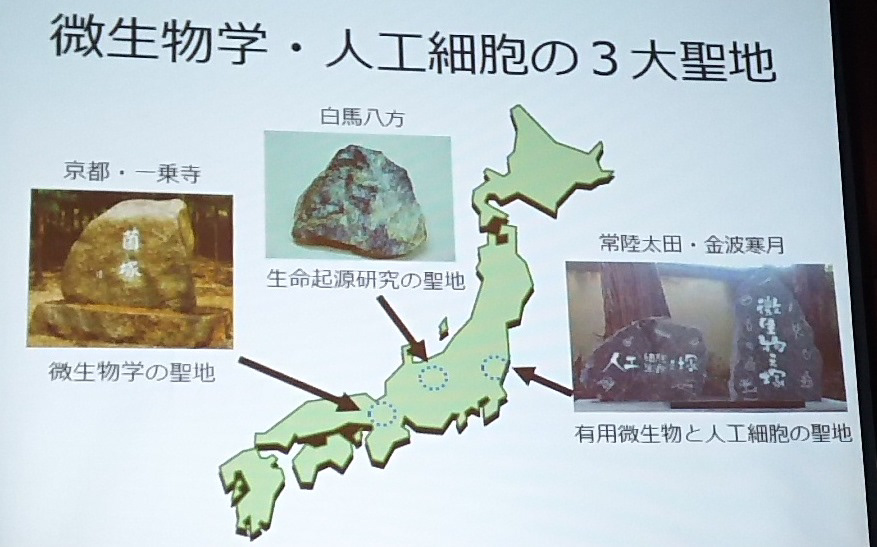
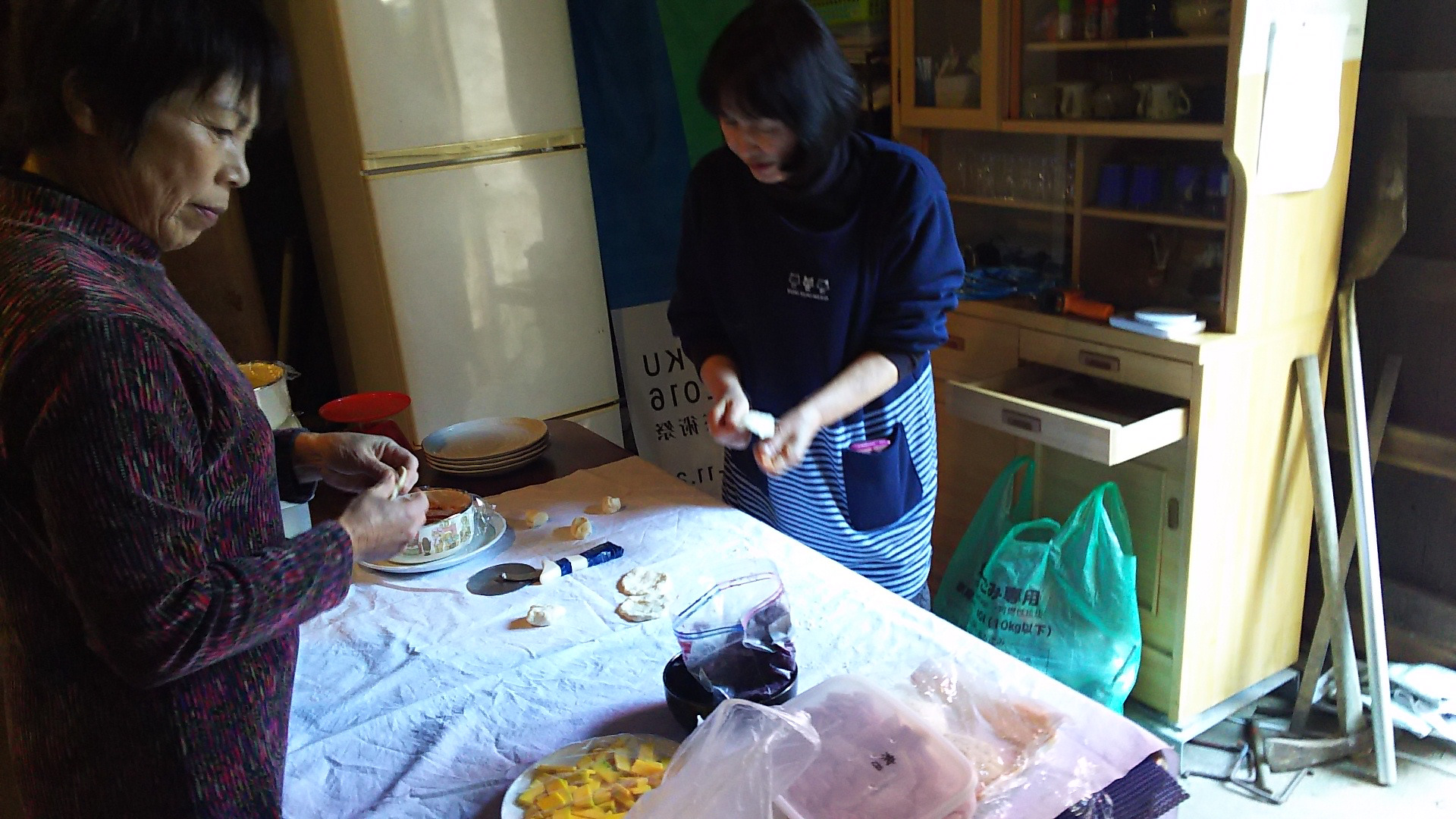
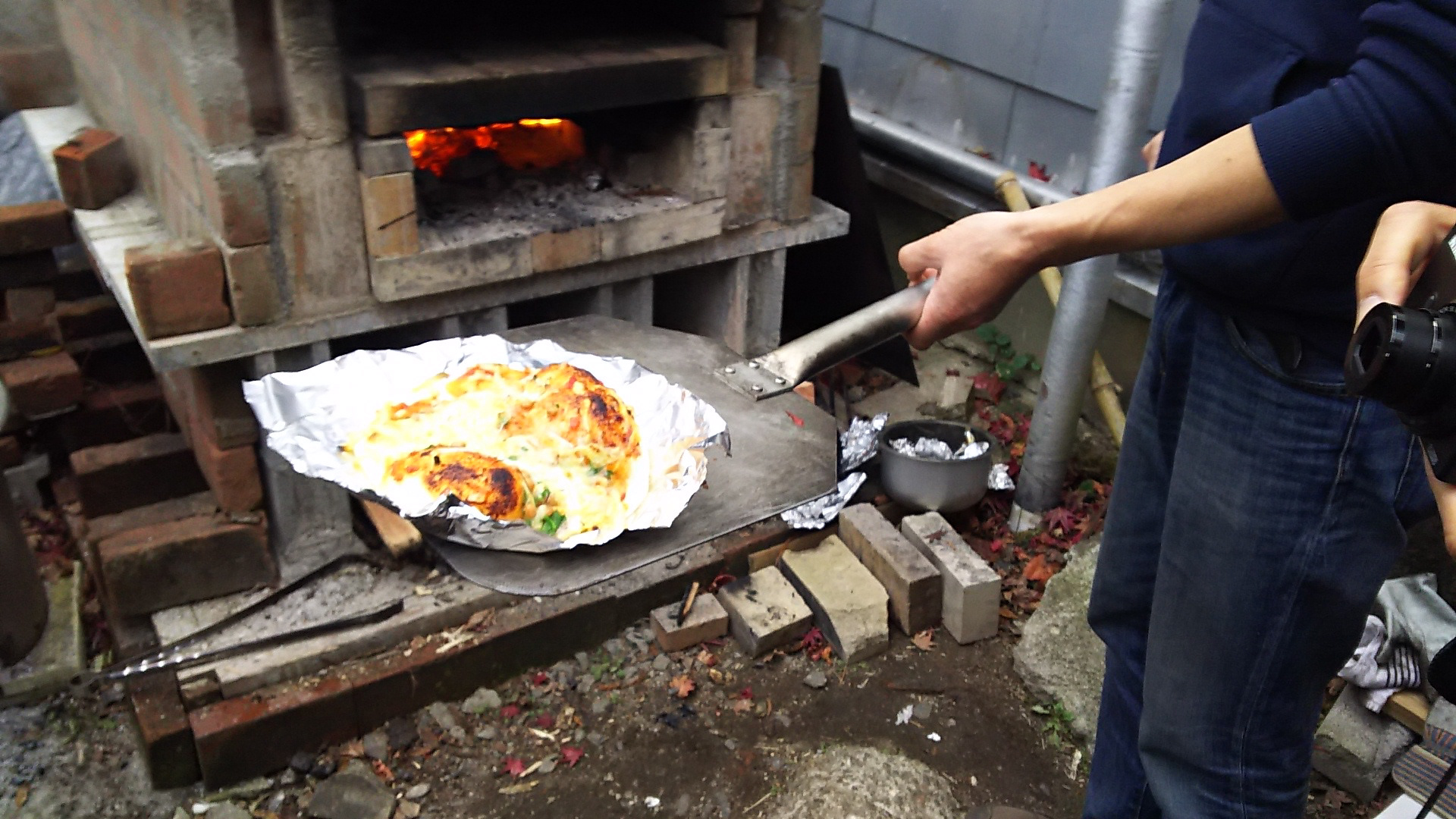
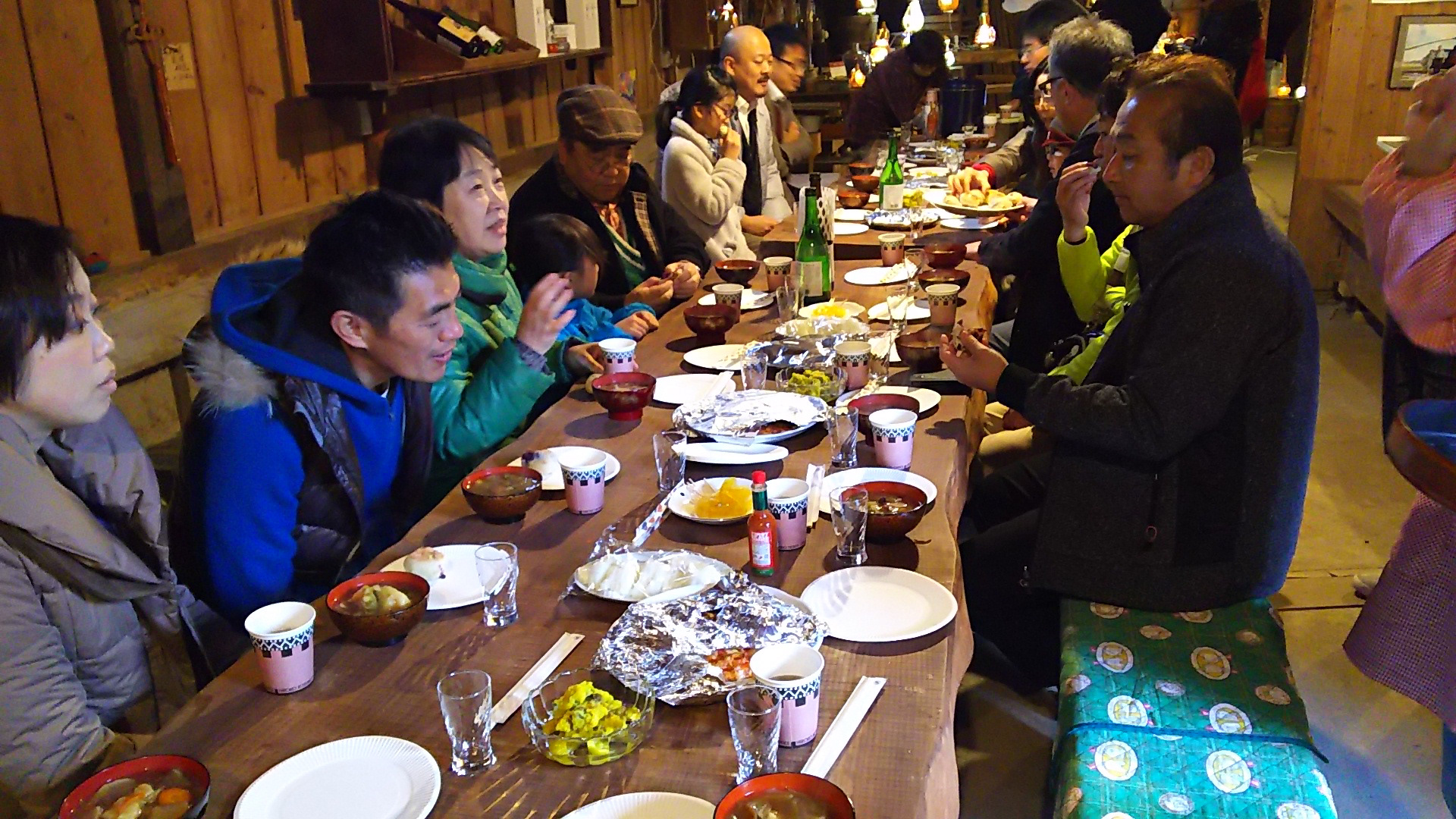


metaPhorest aPrayer Project Team:
Project leader: Hideo Iwasaki
Core members (metaPhorest): Hideo Iwasaki, Hanna Saito, Mio Iizawa, Shiryu Kirie, Noriko Toda
Collaborators:
Stone monuments: Masataka Inada, Hirohisa Nemoto, Sachiko Nemoto
Calligraphy: Akira Watanabe
Kinpa-Kangetsu: Jin-ichi Sukegawa, Kazuyoshi Sagawa, Yoshimasa Sagawa, Fumio Kondo
Artificial cell/life researchers: Masahi Aono, Kei Fujiwara, Norikazu Ichihashi, Takashi Ikegami, Daisuke Kiga, Yutetsu Kuruma, Shinichiro M Nomura, Tadashi Sugawara, Kazuhito Tabata,Shoji Takeuchi, Taro Toyota, Takuya Ueda
Geologist: Michio Tagiri
Science historian: Makoto Hayashi
Fermentation makers: Yashishi Okazaki, Akihiro Okabe, Koji Kaneko, Katsunori Suzuki, Tsugunori Tominaga, Yukio Nagata, Hideshige Hanawa, Daiki Fuse, Akira Watanabe, Kenpoku Art 2016: Yukiko Shikata, Yuki Miyata, Hiroshi Nakamoto
Filming: Hideo Iwasaki, WAC Ltd., Rikuo Ihara, Daiki Matsuoka, Hiroto Watanabe
Translation: Noriko Toda, Hideo Iwasaki
Special thanks: Yukiko Shikata, Hiroshi Nakamoto, Kenji Fujita, Akihiro Kubota
This project was supported by Kenpoku Art 2016 (Ibaraki Prefecture), Waseda University, and metaPhorest.
生命科学の最前線では,細胞・生命の人工的な合成が試みられています。いっぽう、石碑を建てた茨城県の県北地域は,納豆・醤油・酒造など,発酵・醸造産業が盛んな土地です。このプロジェクトは,「人工細胞や微生物の慰霊」という補助線を引くことで,私たちが生命性を見いだす視座や,生命観の歴史を捉え直そうとする試みです。人工細胞については別のページに詳しく紹介したので、ここでは「微生物の慰霊」について書きます。
もともとこのプロジェクトは「人工細胞の慰霊」がメインではあるのですが、多くの方々にとって人工細胞や人工生命は身近なものとは言い難いです。それに対して、微生物たちは人知れず私たちの周囲にあるだけでなく、私たちの身体を構成する要素でもある(私たちの体は約37億のさいぼうから成り立つと言われているが、実際にはその10倍ともいわれる数のバクテリアが体内に常在し、私たちの体の不可欠な要素となっている)。微生物は,日常的に接しているはずの生物ですが,普段それと意識されにくい存在です。生物としては単純なものとされていますが,人類は微生物一匹さえ作ることができていません(そこになんとか挑戦しようとしているのが人工細胞プロジェクトでもあるのです)。
人工細胞の慰霊碑はおそらく世界初ですが、日本には微生物の慰霊碑は実は先例があります。比較的有名なのは京都の曼殊院という寺にある「菌塚」です。これは1981年に,酵素工業会社の社長が建立したものです。それ以前にも、私たちの知る限り、複数の菌の供養碑が建てられていますが、いずれも発酵産業や造園業に関わる会社によるものです。私たちも、発酵食品製造が盛んな茨城県北地域で、発酵業に従事する方々の多大なご協力により、このプロジェクトを動かしてきました。
ですが、私たちは「人の役に立った微生物たち」だけでなく、人類が誕生する以前から常にパイオニアであり続けてきた生命の先達のしての微生物たち、そしていまなお地球の生態系の大半を占め、人知れず様々な環境で息づく微生物たちに思いを馳せることこそが重要だと考えています。そこで、私たちの「微生物の塚」には次のような碑文を記しました。
「人々の暮らしに豊かな実りをもたらしてくれる発酵微生物たちに、深い感謝と畏敬の念を表する。また、人知れず命を紡いできた無数の微生物たちにも思いを馳せ、ここに謹んで微生物の塚を建立する。 2016年9月」
石碑の表には、コウジカビ,枯草菌,酵母,シアノバクテリアの絵姿のほか,納豆,醤油瓶,徳利,寒天上の微生物の培養の様子,そして顕微鏡のデザインが施されています。揮毫は、書をたしなむ地元の糀屋で、地域の取りまとめ役でもある渡辺彰氏によるものです。
2016年の茨城県北芸術祭では、慰霊空間に二つの祭壇を設けました。二つの石碑(人工細胞の碑と微生物の碑)に対応する、人工細胞の祭壇と微生物の祭壇です。それぞれの上にガラスの容器が載せられています。微生物の祭壇には、地元の発酵業に従事する9名の方々からご提供いただいた発酵食品やその材料が収められています。
納壺リスト(微生物編)
納豆菌:現在、糸引き納豆の製造に用いられる納豆菌は日本国内で2から3種が流通しているという。これは宮城のもので、昔懐かしい味に仕上がるとのことである。とはいえわずかな条件の違いで出来が変わってきてしまうため、毎日手をかけて品質を保つのは簡単ではないそうだ。(金砂郷食品提供)
納豆菌:現在、糸引き納豆の製造に用いられる納豆菌は日本国内で2から3種が流通しているという。これは宮城のもので、昔懐かしい味に仕上がるとのことである。とはいえわずかな条件の違いで出来が変わってきてしまうため、毎日手をかけて品質を保つのは簡単ではないそうだ。(金砂郷食品提供)
酒米・麹(こうじ) 日本酒を造る際、蒸した酒米にコウジカビ(もやし)を混ぜて麹(こうじ)を作ってデンプンを糖化する。米の糖分をアルコールに換えるのが酒母(酵母)である。酒米には酒専用のものを使い、蒸す前に十分に磨き落とす必要がある。素早く削ろうとすると米は熱を持って砕けてしまうためゆっくり丁寧に行わねばならず、数日を要することもある。(剛烈酒造提供)
酒粕 酵母、麹、蒸米の混合した白く粘性のある液体を「もろみ」と呼び、その中では発酵により糖やアルコールが作られている。日本酒のもろみを圧搾した後に残る固体が酒粕であり、 甘酒や粕漬など食用にも利用される。なお、圧搾後の液体は酒を長期貯蔵のためにその後加熱され中の微生物は殺菌される。(岡部酒造提供)
納豆の藁づと・乾燥納豆 納豆菌は真空や飢餓、熱湯でも死滅しない非常に生命力の強い生物である。伝統的な納豆の製法においてはこうした納豆菌の性質を利用し、煮沸により藁に付着している他の微生物を死滅させることで納豆菌だけを大豆の上で増殖させることができる。また,加熱をしないフリーズドライをすれば,乾燥納豆中でも納豆菌は死滅しない。(トーコーフーズ提供)
醤油かす 醤油造りには主原料である大豆や小麦のみならず、麹、酵母、乳酸菌などの微生物の力が欠かせない。これらの微生物こそが、原料の分解や発酵により醤油のうまみと香りを引き出すためである。醤油かすにはそれらが分解できなかった繊維質などを含み、微生物もまた付着している。(米菱醤油提供)
パン酵母 パン作りに果物や穀物から起こした酵母を利用しているものをしばしば天然酵母のパンと呼ぶことがある。ここにあるのはリンゴ、ブドウ、クランベリーから培養した酵母である。それぞれの酵母には個性があり、その特徴と小麦の組み合わせによってどんなパンにすればおいしく仕上がるかを考えるという。(サニーサイドキッチン提供)
人工細胞および微生物の慰霊祭
2016年の芸術祭以来、地元の方々の主催で毎年、微生物と人工細胞の慰霊祭が行われています。
まず最初は2016年の石碑の除幕式で、大雨の中、metaPhorestのメンバー、芸術祭の関係者、地元の発酵業者の皆さん、石碑を置いた里美地区の地元の方々や地主のご家族、合成生物学者、石材・石彫にご協力いただいた方々などを迎え、地元の神社の神主による祝詞と入魂の儀を行いました。
第二回目は翌2017年に行われた、納骨式ならぬ納壺式で、祭壇上のガラス壺二つと、これまでのこのプロジェクトに関する全記録(紙媒体及び電子媒体)を厳封したものを石碑手前のスペースに収めました。人工細胞に作らせたアルコールで塚を清めました。また、石碑のある旧酒蔵の庭につくられた石窯で発酵食品の塊(納豆ピザ)を焼いて皆で食べますが、その間焼かれる微生物たちに思いを馳せて手を合わせるという儀式も行いました。
以降、毎年11月末の紅葉の美しい季節に、地元の方々や人工細胞研究者たちが集まって和やかに執り行われています。コロナ禍の2020年にどうなるのかはまだ予定が立っていませんが、長く続けていければと思っています。
aPrayerプロジェクトチーム
Core members (metaPhorest): 岩崎秀雄、齋藤帆奈、飯沢未央、切江志龍、東田範子
Assistant members (Tama Art University): 井原陸雄,松岡大起,渡邊裕人
metaPhorest(メタフォレスト)は,「生命」を巡る美学・芸術の研究や制作を行うための場です。2007年から,早稲田大学(先端生命医科学研究施設)の生物学研究室の中に設置されています。生命に興味を持つアーティストやデザイナーが滞在し,実験設備やセミナーなどを科学者たちと共有しながら活動するための機会を提供し,国内外で活発に展示・発表を行っています。 https://www.facebook.com/metaphorest.net/
以下の多くの方の協力を頂きました(敬称略)。心より感謝いたします:
石碑製作:稲田昌孝(矢須石材店),石碑揮毫:渡辺彰(喜久屋),石材調達協力:根本敬久(根本工務所),根本幸子
石碑設置協力:折橋コミュニティステーション(助川仁一,近藤文雄ほか),佐川和義ほか佐川家の方々
人工細胞・人工生命研究:青野真士(東京工業大学),市橋伯一(大阪大学),池上高志(東京大学),上田卓也(東京大学),木賀大介(早稲田大学),車兪澈(東京工業大学),菅原正(神奈川大学),竹内昌治(東京大学),田端和仁(東京大学),豊田太郎(東京大学),野村M慎一郎(東北大学),藤原慶(慶應義塾大学),地質学:田切美智雄(茨城大学・日立市郷土博物館),科学史・生命思想史:林真理(工学院大学)
醸造・発酵関係:岡崎靖(ヨネビシ醤油),岡部彰博(岡部酒造),金子康二(サニーサイドキッチン),鈴木勝則・富永継則(剛烈富永酒造),永田由紀夫(金砂郷食品),塙秀茂(トーコーフーズ),布施大樹(木の里農園),渡辺彰(喜久屋)
その他協力:藤田謙二(鯨ヶ丘商店街),久保田晃弘(多摩美術大学)
早稲田大学岩崎秀雄研究室
県北芸術祭2016(担当キュレーター:四方幸子,アシスタント:仲本拡史ほか)